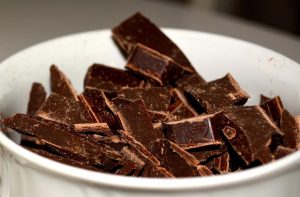Vitamins are micronutrients that are needed in a very small amount in our body which varies from a fraction of a milligram to several grams.
The Health Benefits of Vitamins
They are a class of organic compounds categorized as essential nutrients. Vitamins do not produce energy but enable the body to use other nutrients. Since our body cannot synthesize them so they must be provided with food. A well-balanced diet provides in most instances the vitamins needed by a healthy individual.
Vitamins are divided into two groups:
Fat-Soluble Vitamins: These are Vitamin A, D, E, and K
Water Soluble Vitamins: These include the B group of vitamins and Vitamin C.
Each has a specific function to perform and deficiency of any particular may lead to specific diseases.
Vitamin A: Sources: Animal source: Liver, egg, milk, butter, fish, meat, and cheese; Plant source: Green leafy vegetables e.g. spinach and green-yellow fruits like papaya, mango, and pumpkin; Fortified Food: Vanaspati, margarine, and milk. Deficiency results in night blindness, conjunctival and corneal xerosis, bigot’s spot, and keratomalacia. Daily Requirements are: Adults: 600 mcg, Children: 400 mcg, Infants: 350 mcg, Pregnancy and lactation 600-950mcg
Vitamin D: Its nutritionally important forms are Calciferol and Cholecalciferol. Sources: Sunlight, egg yolk, fish liver oil. Deficiency results in rickets in children and osteomalacia in adults. Recommended dose: Adult 2.5 mcg, Infants and children 5 mcg, Pregnancy and lactation 10mcg
Vitamin E: Also called tocopherol acts as an antioxidant and is good for the skin. Sources: vegetable oil, cottonseed, sunflower, egg yolk, butter. Current estimated requirement is 0.8mg/g.
Vitamin K: It has two forms K1 and K2. K1: It is found in fresh green vegetables and functions to stimulate the release of a certain coagulation factor. K2: It is synthesized by intestinal bacteria. Deficiency of Vit K leads to prolonged bleeding time and decreases prothrombin in blood. The daily requirement is 0.03mg/kg.
B Groups Of Vitamins
- Thiamine – Vitamin B1: It is essential for the utilization of carbohydrates. Sources: Whole grain cereals, wheat, yeast, pulses, oilseeds, and nuts. Deficiency results in Beriberi and Wernick’s encephalopathy. The Daily recommended allowance is 0.5mg/1000Kcal of energy.
- Riboflavin – Vitamin B2: Its fundamental role is in cellular oxidation and in maintaining the integrity of mucocutaneous structures. Sources are milk, egg, and green vegetables Deficiency results in angular stomatitis, cheilosis, glossitis, etc. The daily requirement is 0.6mg/1000Kcal.
- Niacin – Vitamin B3: It is essential for the metabolism of carbohydrates, fats, and proteins. It is also helpful in the normal functioning of the skin. Richly present in legumes, groundnuts, and poultry. Deficiency results in Pellagra which is characterized by 3D diarrhea, dermatitis, and death.
- Pyridoxine – Vitamin B6: Its deficiency causes peripheral neuritis. The daily dose is 2mg.
- Pantothenic Acid: Helpful in the biosynthesis of corticosteroids and the daily requirement is 10mg.
- Folate: It plays important role in the synthesis of nucleic acid and deficiency results in megaloblastic anemia, glossitis, and GIT disturbances. The daily dose is 5-10mg.
- Vitamin B12: Present in liver, kidney, meat, fish, and egg, and its deficiency results in anemia, demyelinating and neurological lesions in the spinal cord, and infertility.
Vitamin C: It is a potent antioxidant and plays a significant role in tissue oxidation. Richly found in citric fruits and deficiency results in scurvy characterized by bleeding gums.

Vitamin A Benefits
Vitamin A also called retinol or beta-carotene is a complex alcohol. Its aldehyde derivative is known as retinal as well as retinene and retinaldehyde. There are several isomers of vitamin A; the most important of them are 13-cis retinol which is found in many fish liver oils and 11-cis retinol which is found to occur in the retina. It is quite heated and stable but it can be destroyed at high temperatures in the presence of oxygen or air.
Sources
Vitamin A is found abundantly in the animal kingdom as compared to a plant. Its sources are
Animal Sources: Liver oils of certain fishes such as halibut, shark, and cod; livers of other animals, egg yolk, butter, cheese, and milk. The colostrum is very rich in vitamin A.
Plant Sources: Its plant sources are Carrots, yellow corn, sweet potato, peaches, and spinach. In fruits, it is present in mango and pumpkin.
Fortified Foods: Vanaspati, milk, and margarine are foods that are fortified with vitamin A.
The liver has an enormous capacity to store vitamin A which is stored in the form of retinyl palmitate. Under normal conditions, a well-fed person has enough vitamin A storage to meet his needs for 6-9 months. Free retinol is highly active but toxic and is therefore transported within the bloodstream in association with retinol-binding protein which is produced by the liver. In case of severe deficiency, decreased production of retinol-binding protein prevents the mobilization of liver retinol reserves.
Functions
Effects on Epithelium: Vitamin A is needed for the maintenance of healthy epithelium throughout the body. It is essential for the formation of glycolipids. It plays role in the synthesis of glycoprotein including those present in the goblet cells which secrete mucus.
Effects on Bones: It is found helpful in the development of bones.
Role in Metabolism: Vitamin A is necessary for fetal development and for cell development throughout life. Vitamin A is involved in the biosynthesis of glucocorticoids. An optimum level of vitamin A is required for the normal activity of the mitochondria.
Role in Vision: This is the best-defined function of this vitamin. The isomer 11-cis vitamin A in the aldehyde form occurs only in the retina. It results in the formation of rhodopsin which is present in rods and is essential for rod vision in dim light.
Role in the immune system: Vitamin A along with certain carotenoids, enhance the activity of the immune system and helps in controlling infectious and even malignancies.
Role in Gene expression: This is carried out by binding vitamin A to a transcription regulatory protein that is helpful in controlling genes.
Deficiency
There occur ocular and extra-ocular diseases due to this vitamin deficiency.
- Ocular Manifestations: These include
- Night blindness: It is the inability to see in the dim light
- Conjunctival Xerosis: Here conjunctiva becomes dry and non-wet-able.
- Bitot’s spot: These are spots on the bulbar conjunctive and are pearly-white.
- Corneal Xerosis: Here the cornea is seemed dull and eventually appears opaque.
- Keratomalacia: It is the liquefaction of the cornea and it’s a grave medical emergency.
- Extra-ocular Manifestations: These include
- Anorexia
- Growth retardation
- Hyperkeratosis
Surplus
Excessive intake leads to hypervitaminosis A. This results in a headache, nausea, vomiting, and drowsiness; peeling of skin also takes place. Excessive intake of vitamin A should be avoided during pregnancy as it increases the incidence of congenital malformation.
Recommended Dose
- Adults 600mcg
- Infants 250 mcg
- Children 600 mcg
- Pregnancy 600 mcg
- Lactation 950 mcg

Vitamin B1 Benefits
Vitamin B1 also called thiamine is a water-soluble vitamin and is important for using carbohydrates.
Properties: It is a white and crystalline compound. It is slowly destroyed by moist heat. It has an odor like that of yeast.
Sources
Thiamine occurs in all-natural foods and its sources include:
Plant sources: Whole grain cereals, wheat, yeast, gram, vegetables, legumes, nuts, and fruits. It also occurs in the outer layer of grains like bran and rice polishing.
Animal sources: Eggs, meat, fish, and milk are animal sources.
Recommended Allowances
The daily requirement of thiamine is 0.5mg per 1000Kcals. The body content of thiamine is placed at 30 mg and if more than this is given it is merely lost in the urine. Patients on regular hemodialysis should routinely be given supplements of thiamine.
Biochemical Function
Thiamine forms the important enzyme the thiamine pyrophosphate by reacting with ATP. Thiamine pyrophosphate is the coenzyme of carboxylase and plays a part in activating transketolase, an enzyme that is involved in the direct oxidative pathway for glucose. In case of its deficiency, there is an accumulation of the substrates which are pyruvic acid, lactic acid, pentose sugars, and alpha-keto carboxylic derivatives.
Deficiency
The two principal deficiency of thiamine deficiency is beriberi and Wernick’s encephalopathy.
Beriberi
Beriberi means ’I cannot’ which points out the fact that the patient suffers from severe weakness and even paralysis. This disease was found to be linked to eating polished rice and was very common in the Far East once where rice is the staple diet. It is now uncommon even in the Far East and is usually found in infants and pregnant and lactating women.
Beriberi occurs in three main forms:
Dry beriberi: It is characterized by nerve involvement in which polyneuropathy is the common feature.
Wet beriberi: This form is characterized by heart involvement also called cardiac beriberi.
Infantile beriberi: This is seen in infants between two and four months of age. The affected baby is usually breastfed by a thiamine-deficient mother who also shows signs of peripheral neuropathy.
Wernick’s Encephalopathy
This is characterized by ophthalmoplegia, polyneuritis, ataxia, and mental deterioration; it is mostly seen in those people who fast.
Korsakoff’s syndrome: This syndrome is seen in chronic alcoholics with this thiamine deficiency. There are bilateral hemorrhages in the hypothalamus.
Requirement
The requirements for thiamine are increased in the following situations:
When there are increased metabolic activities e.g. in case of fever, in doing exercises, and in case of hyperthyroidism.
When carbohydrates form a much greater fraction of caloric intake e.g. when patients are maintained by parental alimentation consisting of glucose.
The patient is on peritoneal dialysis because of thiamine loss in the dialyzing fluid.
Storage
It is stored as thiamine pyrophosphate and also it is stored in mono and triphosphate derivatives.
Surplus
It has no such adverse effects since an excess of thiamine will be excreted in the urine. It only causes some pimples which are not dangerous. Other toxic effects include nervousness and sweating.
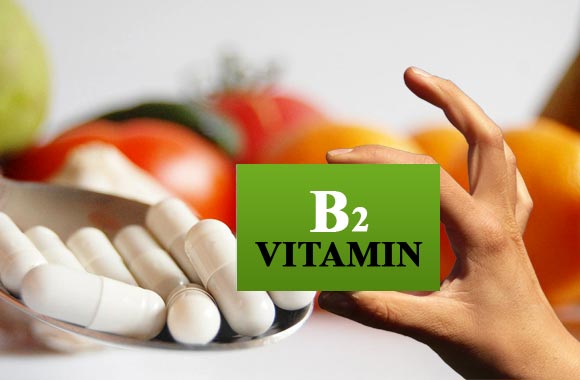
Vitamin B2 Benefits
Vitamin B2 also called Riboflavin is a member of the B-group of vitamins. It is an orange-yellow crystalline compound and is water-soluble. It is heat stable but sensitive to light-forming lumiflavin.
Sources
This vitamin occurs either as free riboflavin or as a constituent of flavoproteins which act as enzymes. It is widely distributed in nature and present in all cells of plants and animals.
Plant Sources: These include leafy vegetables, fruits, root vegetables, grains, cereals, and pulses
Animal Sources: These include liver, wheat germs, yeast, milk, meat, fish, and eggs.
Biochemical Function
This vitamin is important for cellular oxidation. It is also essential for maintaining the integrity of the mucocutaneous structure. It is a cofactor in many enzymes involved with energy metabolism. It forms two coenzymes
- Riboflavin monophosphate also called flavin mononucleotide (FMN) and
- Flavin adenine dinucleotide (FAD).
FMN is the coenzyme of NADH. The FAD is the coenzyme for xanthine oxidase, acyl CoA dehydrogenase, dihydrolipoyl dehydrogenase, and glutathione reductase. These enzymes catalyze oxidation-reduction reactions.
Deficiency
Riboflavin deficiency is usually associated with a low intake of milk and animal proteins. Pasteurization of milk results in an appreciable loss of this vitamin. Ectodermal tissues such as the skin, nervous system, and eye are the most vulnerable to its lack. Clinically riboflavin deficiency is seen usually along with the deficiency of multiple factors such as in poorer populations and in alcoholics. It is also seen in newborn infants subjected to phototherapy for hyperbilirubinemia. Breastfed infants are more liable to show deficiency because of the lower riboflavin content of human milk. Its deficiency is also seen in patients on chronic peritoneal dialysis and hemodialysis. Following are the features that are seen within this deficiency.
There occurs inflammation of the lips, angular scars or angular stomatitis, fissures at the angle of the mouth and red denuded lips also called cheilosis. The tongue of a person shows inflammation with atrophy and flattening of the papillae.
There are scaliness and greasiness along with fissures in the folds of the nose and ears called dys-sebacea.
There are eye disturbances such as inflammation and vascularization of the cornea, photophobia, and redness of the eyes, along with itching, drying, and burning of the eyes. There is a decrease in visual acuity also occurred.
The bone marrow shows erythroid hyperplasia. The peripheral blood shows anemia which is a normocytic, normochromic type. The reticulocyte count is also decreased.
Neuropathy is also seen in some individuals with this vitamin deficiency.
The dermatitis of the trunk, extremities, scrotum, or vulva may also arise.
Laboratory Tests for Deficiency
There is a decreased activity of the FAD-containing enzyme glutathione reductase in the RBCs. The urinary content of this riboflavin is also found to be very low.
Absorption, Fate, and Excretion
Riboflavin is absorbed from the upper gastrointestinal tract by a transport mechanism and is converted into FMN. 9% of it appears in the urine. It is synthesized by the bacteria present in the colon but this vitamin is not absorbed.
Requirement
Riboflavin is not stored as such in the body. Its daily requirement is 0.6 mg per 1000 kcal of energy intake.
Surplus
There is no such harmful effect seen in the case of its excess use since it is not absorbed. An increased amount of riboflavin is excreted in the urine if it’s taken in an excess amount.

Vitamin B3 Benefits
Vitamin B3, also known as Niacin is the generic term for nicotinic acid and its amide derivative nicotinamide also exhibits the nutritional activity of nicotinic acid and to which nicotinic acid is converted. Nicotinic acid is a vasodilator and produced flushing which is accompanied by a sensation of itching and burning. When given in large doses, this vitamin produces lower plasma cholesterol and is sometimes used for this purpose although it may cause peptic ulcer disease. Nicotinamide does not possess these properties and is heat-stable. These compounds are excreted in the urine.
Sources
Animal sources: The kidney and the liver are the richest sources of this vitamin along with meat, fish, egg, milk, tea, and coffee.
Plant sources: these include whole wheat, dried legumes, unpolished rice, peanuts, leafy vegetables, and tomatoes.
In the body, niacin can be derived from tryptophan 60 mg of tryptophan provides 1 mg of this vitamin B2. In many kinds of cereal such as maize especially, niacin occurs in a bound form that is unavailable to the consumer.
Functions
Niacin is an important vitamin for the metabolism of nutrients such as carbohydrates, fats as well as protein.
Vitamin B3 is necessary for the performance of normal functions of the skin, intestine, and nervous system.
This vitamin differs from its other B group vitamin in that an essential amino acid, tryptophan serves as a precursor.
Another feature of niacin is that it is not excreted via the urine as such but it is metabolized to at least two major methylated derivatives which are
N-methyl-nicotinamide
N-methyl pyridines.
Nicotinamide is part of the structure of the two important coenzymes NAD+ and NADP+ which play important role in biological oxidation.
Deficiency
Vitamin B3 deficiency results in pellagra in humans. This disease is characterized by 3D’s namely diarrhea, dermatitis, and dementia; the fourth D signifying death should also be kept in mind as a severe form of this disease may prove fatal. It is endemic in those areas where maize is the main diet and intake of good quality protein is low. This disease is mostly found in women of childbearing age and in growing children.
The following body organ systems are affected due to pellagra.
Skin
There are dermatitis, pigmentation, and thickening of the skin. Skin lesions are symmetric and tend to be localized in overexposed areas due to photosensitivity. Pigmentation is specially marked over malar and supraorbital regions. An erythematous eruption resembling sunburn first appears on the back of the hands followed by other regions exposed to the sunlight.
Digestive System
There are inflammation and smooth atrophy of the mucosa of the tongue and mouth showing fissures along with stomatitis, glossitis, and pain in swallowing, anorexia, diarrhea, and proctitis are observed.
Nervous system
This system is involved lately. There occurs myelin degeneration in various regions of the spinal cord and cerebrum which leads to parenthesis and anesthesia. Mental disorders such as general nervousness, confusion, depression, insomnia, delusions, hallucinations, and dementia are seen and these symptoms may be due to a decreased formation of serotonin from tryptophan. Pellagra is the most serious deficiency disease met within the United States.
Surplus
Large doses of niacin have been found to result in effects produced by histamine released in large amounts such as flushing, pruritus, aggravation of asthma, and gut disturbances. Acanthosis nigricans, a skin condition may also occur. It may lead to even hyperuricemia, hyperglycemia, and hepatic toxicity.
Requirement
The daily requirement of this vitamin is 6.6 mg/1000Kcal of energy intake.
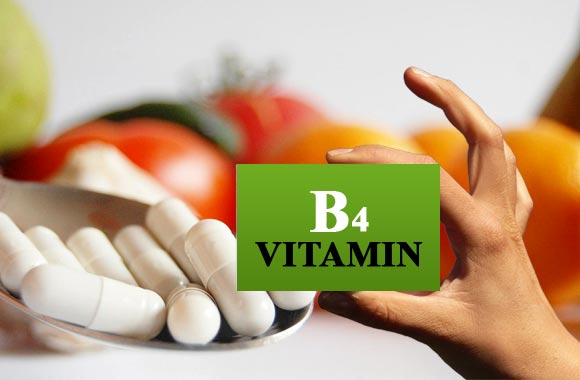
Vitamin B4 Benefits
Vitamin B4 also known as Adenine is a member of the Vitamin B-Complex family. Vitamin B4 is also one of the water-soluble vitamins. Adenine is a compound that acts as a co-enzyme with other compounds such as vitamins and is helpful in producing energy. Adenine is one of the nitrogenous bases of DNA also helpful in making a code for DNA and is a very important component of the DNA. It is a purine. Adenine forms a bond with thiamine in the DNA. This vitamin B4 also forms a part of adenosine triphosphate (ATP) which is important in the transport of energy between many reactions and also forms adenosine which plays an important role in various biochemical processes. It enables the change of phosphate group which then provides energy which is very necessary for various cellular reactions and for cells’ life.
Sources
It mostly occurs in the plants so these are as follows.
Plant Sources: These include vegetables, Brewer’s yeast, propolis, fresh fruits, whole grains containing bread and cereals, bee pollen, raw unadulterated honey, and royal jelly. It is also found in complex carbohydrates.
Adenine is also found in various herbs such as blue cohosh, blessed thistle, ginger, burdock, cascara sagrada, capsicum (cayenne), caraway, catnip, cloves, and couch grass
Functions
Since it acts as a co-enzyme with other vitamins so it, therefore, enhances metabolism.
It increases the formation of antibodies which are helpful in counteracting various infections.
It plays a role as a precursor of the assimilation of other B-vitamins.
It helps to remove fatigue, weakness, and debility.
It plays a role as a precursor of the assimilation of other B-vitamins.
It causes the promotion of cell formation as well as normal growth.
It Increases the transit time of the intestinal tract of the body.
It also helps to maintain the balance of blood sugar levels in our bodies.
It strengthens our immune system and its response.
It causes the promotion of cell formation as well as normal growth.
It causes the prevention of cellular mutation and the formation of free radical
It also helps to maintain the balance of blood sugar levels in our bodies.
It increases the transit time of the intestinal tract of the body.
This vitamin B4 has been found useful in the treatment of various diseases such as ulcers, constipation, and dyspepsia.
Adenine also reduced cholesterol levels.
It may be useful in treating bile obstruction, alopecia, sinusitis, and dandruff. It is helpful in curing atrial tachycardia.
Deficiency
Vitamin B-4 leads to growth retardation blood disorders, skin disorders, and gastrointestinal disturbances, such as constipation, vomiting, or nausea.
It causes muscle weakness, sensitivity to insulin, and low blood glucose levels.
There may arise physical as well as mental depression, fatigue, anemia, vertigo, and dizziness.
Allergies and increased susceptibility to infections occur due to a poor immune system.
Surplus
There is no such evidence of toxicity due to the increased amount of this vitamin in our bodies.
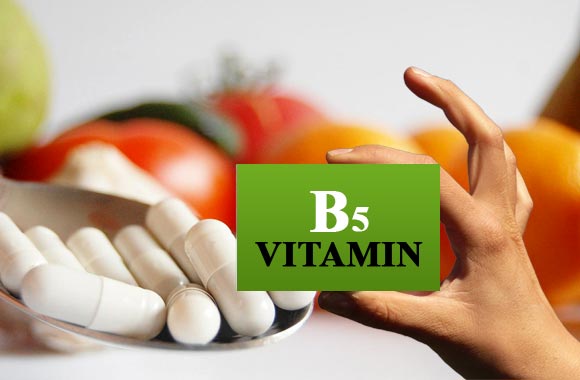
Vitamin B5 Benefits
Vitamin B5 is a viscous yellow and is stable in moist heat but is destroyed by moist heat. Pantothenic acid is available commercially as sodium and calcium salts. Its other chemical names are Panthenol and Pantethine along with Pantothenic Acid
Sources
This vitamin is ubiquitous and is very widely distributed. The animal and plant sources include:
Animal Sources: Liver, egg, kidney, meat, and milk.
Plant Sources: These include peas, cauliflower, avocados, rice cabbage, potatoes, and tomatoes.
The E.Coli present in the intestine also manufactures it which may be absorbed then. It is because of its widespread occurrence that it was named pantothenic acid. This vitamin B5 is quite an unstable vitamin.
Functions
There is a long-standing link between pantothenic acid and adrenal cortical function. It plays role in the biosynthesis of corticosteroids. Human blood usually contains 17-35 mg of pantothenic acid per 100ml and it is mostly present in the coenzymes.
It is first changed into the body to 4-phosphopantetheine by the process of phosphorylation and linkage to thioethanolamine which forms a part of the molecule of coenzyme A (CoA-SH). Coenzyme A plays role in the metabolism of proteins, fats, and carbohydrates and also takes part in many physiological reactions such as the formation of acetyl CoA and succinyl-CoA in the oxidation of fatty acids and in the utilization of acetoacetic acid, synthesis of cholesterol, and in many other biochemical reactions.
In addition to forming a part of the molecule of coenzyme A, pantothenic acid also occurs in the molecule of acyl carrier protein which plays role in the biosynthesis of fatty acids. Folic acid and biotin seem to be needed for the utilization of this vitamin. Recently research has shown that it also takes part in the post-translational modification of proteins e.g. N-terminal acetylation, acetylation of internal amino acids, and fatty acid acylation.
Adequate Daily Requirement
The daily requirement of vitamin B5 is set at 10 mg and all food contributes to dietary intake. About 3mg of this vitamin is excreted in the urine.
Deficiency
It is manifested by neuromuscular degeneration and deficient functioning of the adrenal cortex. The clinical picture of the deficiency state is as follows;
There are irritability, restlessness, disturbed sleep rhythm, and excessive fatigue on mild exercise.
There occur various gastrointestinal disturbances including pain, nausea, vomiting, and stool problem.
The response of the adrenal cortex to ACTH is diminished. For example, the eosinopenia seen in normal people after ACTH administration does not take place.
There occurs a syndrome named burning feet syndrome due to vitamin B5 deficiency. This syndrome is due to decreased acetylation reactions.
Lack of this vitamin leads to the depressed metabolism of both carbohydrates as well as fats.
It may also cause the lower animals retard growth, failure of reproduction, graying of the hair, dermatitis, fatty liver, and hemorrhagic adrenocortical necrosis.
Surplus
There has been no known toxic effect seen so far by this vitamin B5. If someone ingests an increased amount of this vitamin, it does not lead to any harmful effects on him. It has been proved by the administration of large doses of pantothenic acid without any significant effects.
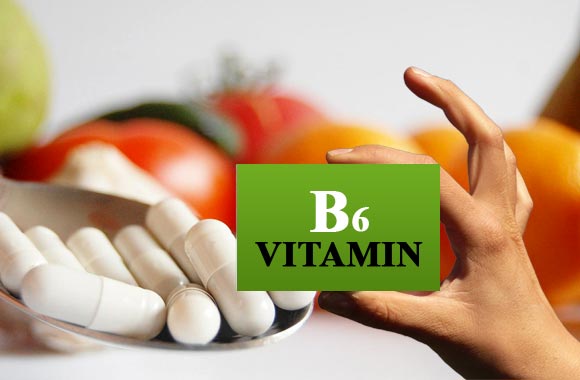
Vitamin B6 Benefits
Vitamin B6, also known as Pyridoxine is water-soluble, heat stable, and a basic substance with colorless crystals. It is sensitive to light, ultraviolet rays, and alkalies. This vitamin exists in three forms; pyridoxine, pyridoxal, and pyridoxamine. It is convertible to its aldehyde form which is pyridoxal and amino form which is pyridoxamine. These three forms are interconvertible and pyridoxal and pyridoxamine occur as phosphates. Pyridoxine is excreted in urine as pyridoxic acid.
Sources
Animal Kingdom: Egg yolk, meat, fish, poultry, and milk in the animal kingdom are good sources.
Plant Kingdom: Yeast, whole grains, legumes, cabbage, cereals, and many other vegetables in the plant kingdom are good sources.
Functions
This vitamin B6 plays an important function in the metabolism of amino acids, fats, and carbohydrates. Pyridoxal is converted into phosphate. The pyridoxal phosphate so formed acts as a coenzyme for various important reactions taking place in our body, especially those involving amino acids. These reactions include:
Transamination: Enzymes catalyze transamination reaction which is AST and ALT. The finding of low ALT activity of red blood cells is of help in diagnosing vitamin B6 deficiency; this enzyme activity is increased when B6 is administered.
Decarboxylation: This reaction results in the formation of serotonin and gamma-aminobutyric acid and these are very important neurotransmitters for our brain. Other reactions of decarboxylation are involved in the formation of histamine and dopamine from histidine and DOPA respectively. Vitamin B6 is contraindicated in the treatment of Parkinson’s disease with L-DOPA since it antagonizes the effect of this drug.
It is a coenzyme for diamine oxidases that catalyze the other reaction which is oxidative deamination of diamines like cadaverine and putrescine; these enzymes are also involved in the catabolism of histamine.
Vitamin B6 takes part in the metabolism of tryptophan because it is a coenzyme for kynureninase which catalyzes the conversion of kynurenine to anthranilic acid. The administration of excess tryptophan to pyridoxine deficient people increases the urinary excretion of xanthurenic acid.
Vitamin B6 is involved in the formation of niacin from tryptophan. In B6 deficiency tryptophan instead of forming niacin forms xanthurenic acid.
This vitamin takes part in the metabolism of Sulphur-containing amino acids. The enzymes catalyze the formation of cystathionine from homocysteine and serine contains B6 as a coenzyme.
It is also a coenzyme for threonine aldolase as well.
Pyridoxine is involved in the synthesis of delta-aminolevulinic acid which is an intermediate in the formation of porphyrins which give rise to heme. This explains anemia occurring in the case of vitamin B6 deficiency.
Pyridoxine is a part of the molecule of glycogen phosphorylase and makes this enzyme stable.
Vitamin B6 helps in the entry of amino acids and potassium ions into the cells against a concentration gradient.
It is also involved in the manufacturing of arachidonic acid from linolenic acid.
Deficiency
In the human being, deficiency symptoms appear only after a prolonged deficiency and occur mainly in young infants and pregnant women. Erythropoiesis, skin, and nervous system are the ones worst affected. There occurs anemia of hypochromic, microcytic type along with lymphocytopenia; skin lesions occur on the face and nasolabial seborrhea is present. The tongue shows glossitis. In young infants, their digestive system shows troubles and convulsions. These convulsions are caused by an inhibition of decarboxylation of glutamic acid to GABA. Its deficiency also produces a deficiency of neurotransmitters. Peripheral neuropathies with symmetrical motor and sensory derangements are also seen.
Surplus
Its excess leads to neurotoxicity. The symptoms include peripheral neuropathies, including ataxia, peri-oral numbness, and clumsiness of the hands and feet.
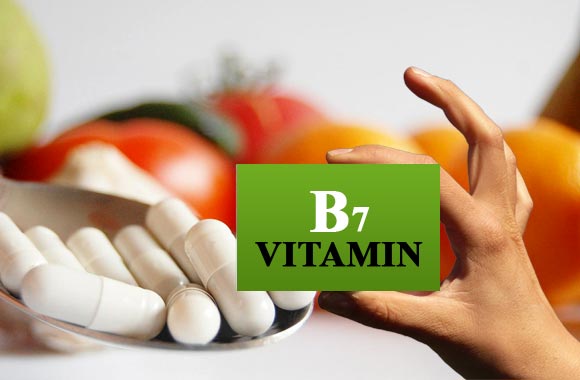
Vitamin B7 Benefits
Biotin, also known as Vitamin B7 has long colorless needle-like crystals. It is only slightly soluble in water and is heat-stable. It is monocarboxylic acid. Its old name was Vitamin H but after more research, it was reclassified as being part of the vitamin B family.
Sources
It is widely distributed in nature and is found especially in the liver, kidney, milk, tomatoes, yeast, and molasses. Biotin occurs in large amounts in royal jelly produced by bees. It is also synthesized by the intestinal flora and this seems an important source of biotin than the diet. It is largely ingested in a form linked to protein from which it is released by the pancreatic juice enzyme biotinidase.
Functions
Biotin acts as a coenzyme for the enzymes carboxylases that catalyze reactions that are involved in the fixation of carbon dioxide which is first taken up by this vitamin. The following reactions need biotin as a coenzyme;
In the conversion of acetyl-CoA to malonyl-CoA. This is the first step in the cytoplasmic biosynthesis of fatty acids.
It is important for the conversion of pyruvic acid to oxaloacetic acid.
It is used in the carboxylation of propionyl-CoA to D-methylmalonic CoA.
Conversion of Beta methylcrotonly-CoA to Beta-methylglutaconly-CoA which is then changed to HMG-CoA.
Biotin is also seen to play role in the process of gluconeogenesis. This is important for the supply of glucose to the body.
Deficiency
The deficiency of biotin is rarely seen clinically but can be produced experimentally by feeding to volunteers a large quantity of raw egg white. A glycoprotein namely avidin which is strongly basic is present in raw egg white and takes up all biotin and forms a biotin-avidin complex. This cannot be hydrolyzed by proteases or even by acids and therefore the ingested biotin is not absorbed. One molecule of avidin combines with two molecules of biotin. Biotin deficiency may also result from biotinidase deficiency in the pancreatic juice and in malabsorption syndromes. Symptoms of biotin deficiency resemble those arising from essential fatty acids deficiency and include
- Perioral dermatitis
- Alopecia
- Conjunctivitis
- Ataxia
- Conjunctivitis
In children, its deficiency may result in
- Delay in development
- Neurological defects
- Organic aciduria.
Biotin is given therapeutically to babies with infantile diarrhea, to patients on long-term parenteral nutrition, and to individuals with genetic alterations of biotin-dependent enzymes. Gastrectomy, achlorhydria, elder people, epileptic people, burnt people, and athletes require large a amount of this vitamin. Its requirement is also increased in case of pregnancy and lactation.
Recommended Allowances
- Infants 10-15 µg
- Children and adolescents 20-30 µg
- Adults 30-100 µg
Surplus
There is no known toxicity reported if this vitamin is taken in excess. It is relatively safe.
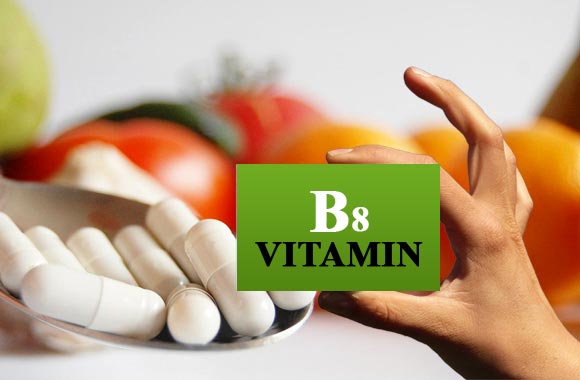
Vitamin B8 Benefits
Its chemical names are 5′-adenylic acid, ergadenylic acid, and adenosine monophosphate. This vitamin is soluble in water. It is synthesized in our body as well along with its wide distribution in nature. It is one of the nucleotides present in RNA. It contains sugar ribose as well as a phosphate group.
Sources
It is present in animal sources as well as in plant sources.
Animal Sources: Yeast especially Brewer’s yeast, yogurt, egg beef liver, cheese pig’s kidney, and milk, are its animal sources.
Plant Sources: Oatmeal, whites, and nuts like hazelnuts, walnuts, and almonds are rich in vitamin B8. Mushrooms, rice germ, wheat germ, wholemeal bread, peanut butter, and rice bran also contain this vitamin.
Formation
It is produced when ATP is manufactured in our body by the action of the enzyme adenylate kinase. Two ADPs are linked together to form ATP and this AMP (adenosine monophosphate)
It can also be formed by the hydrolysis of adenosine diphosphate. Adenosine triphosphate can also give rise to AMP.
Functions
AMP in the form of cyclic AMP is very important as it acts as a second messenger system and is essential for regulating intracellular signals. It may convert into ATP by the enzyme action adenylate cyclase and this is regulated by glucagon or adrenaline hormones.
It is necessary for the synthesis of ADP, ATP, and RNA.
It plays role in our immune system
Vitamin B8 causes the promotion of a functional nervous system
It is also important for our nails as well as our skin. It prevents the premature graying of hair among young or adults.
It may also be found helpful in RBC’s production.
This vitamin is also effectively utilized in the treatment of some psychological disorders like Obsessive Compulsive Disorder, bulimia, mood disorders, depression, panic attacks, anxiety, etc.
Vitamin B8 also provides relief if a patient is suffering from diabetic neuropathy.
It has been believed by some experts that vitamin B8 stops insomnia in people suffering from it.
Deficiency
This vitamin deficiency leads to the low synthesis of ADP, ATP, and RNA in the body.
There occurs inhibition in the breakdown of food in order to produce energy.
Its deficiency results in a reduction in hormonal function.
Weak muscles, lack of appetite, muscle cramps, fatigue, generalized body aches, hair loss, and a pricking sensation in the skin may be felt by the patient.
Premature graying of hair, seborrhea, and dandruff also occur
Eczema and anemia are also found among these vitamin-deficient people
There may arise heart diseases and lung diseases also in case of its very severe deficiency.
Nervous system abnormalities manifest as tingling in the hands and feet, drowsiness, confusion, lethargy, and hallucination are also due to vitamin B8 deficiency.
It has been claimed by researchers this substance is actually an essential vitamin for our body.
Surplus
Vitamin B8 if taken in excessive amounts leads to toxicity which involves confusion, hallucination, lethargy, and gastrointestinal problems such as nausea, vomiting, etc. The daily recommended dose for Vitamin B8 is almost about 400 µgrams.

Vitamin B9 Benefits
Folic acid, also known as Vitamin B9 has various chemical names such as Folacin, Pteroylglutamic Acid, Folate, and Folinic Acid. Its old name was vitamin M. It is a yellow crystalline substance and is only slightly soluble in water. Folic acid is heat-stable in neutral or alkaline media but not in an acidic medium. Its structure has three components which are derivatives of pteridine, para-aminobenzoic acid, and glutamic acid.
Sources
This vitamin is widely distributed in nature. It is named folic acid because it occurs especially in the foliage of plants. It occurs in food in two forms either free folate or bound folate. Its chief dietary sources are
Animal Sources: Liver. Kidney, beef, meat, dairy products, eggs, and milk.
Plant Sources: These include wheat, cauliflower, cereals, and leafy vegetables.
It is also synthesized by the bacteria present in the intestine but this solely is not very significant. The total body folic acid which is 6-10mg, up to 60% is present in the liver.
Absorption of Folic Acid: Most absorption occurs in the proximal part of the small intestine, and the disease of this part of the gut is the most common cause of the folic acid deficiency. Folic acid taken as such is readily absorbed.
Excretion of Folic Acid: It is excreted in bile but is reabsorbed.
Functions
Folic acid is not active and for its activation, it has to be converted into tetrahydrofolate. Ascorbic acid appears to be essential for the reduction of folic acid to tetrahydrofolate. This tetrahydrofolate gives rise to several folic acid coenzymes because it can act as a carrier of various carbon atoms. These folic acid coenzymes are concerned with a large number of reactions in tissue cells; their participation in the synthesis of purines and thymine makes folic acid important in the growth and reproduction of the cells. So it plays role in the synthesis of nucleic acid which constitutes the chromosome and it is also needed for the normal development of the blood cells in the bone marrow. It is no wonder then that folic acid deficiency is manifested by abnormalities of tissue cells with a high mitosis rate such as the cells of the hematopoietic system and those lining the digestive tract.
Deficiency and Its Effects
Folic acid deficiency may occur from a poor diet. It is commonly found in pregnancy and lactation where requirements are increased.
It results in megaloblastic anemia, and blood shows macrocytic anemia, resembling pernicious anemia but without the nervous involvement of this disease. The mechanism of production of this type of anemia due to folic acid deficiency is that one carbon unites bound to tetrahydrofolate and contributes to the biosynthesis of purines and pyrimidine that are required for the synthesis of a large amount of DNA which is then essential for the normal cell division. Because DNA is not available in sufficient amounts, RNA and protein synthesis continue therefore whatever RBCs are produced they have an abnormal morphology.
It also causes glossitis, and problems in our digestive system which include diarrhea, flatulence, distention, and pain. There occur cheilosis and in case of its severe deficiency, it may lead to infertility and even sterility.
There is also evidence that the administration of folic acid antagonists in early pregnancy may produce abortions or congenital malformations. Blood shows macrocytic anemia resembling pernicious anemia but without the nervous involvement of this disease.
Daily Requirement
Its daily requirement in an adult is 100 mcg per day.
Surplus
There has been shown no evidence of folic acid excess use toxicity so far.
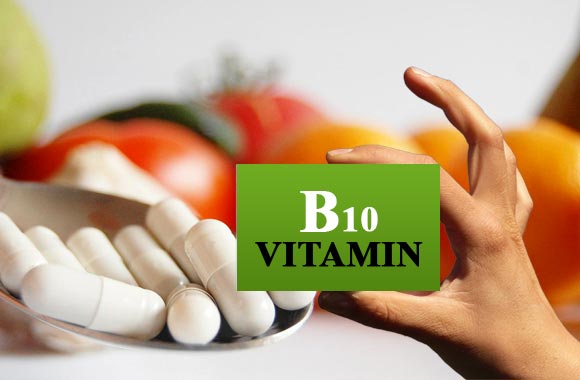
Vitamin B10 Benefits
Vitamin B10 having the chemical name Pteroylmonoglutamic acid belongs to the vitamin B family; its old name was vitamin R. It is a water-soluble vitamin and is often referred to as a component of the vitamin B complex. This vitamin is thought to be essential for the body.
Sources
It is richly found in both animal as well as plant sources.
Animal sources: These contain kidneys, Milk, liver, cheese, yogurt, eggs, brewer’s yeast, etc.
Plants sources: These include green leafy vegetables e.g. spinach, others include bran mushrooms, blackstrap molasses, wheat germ, whole grains, etc.
Function
Vitamin B10 is found helpful in the formation of erythrocytes also called red blood cells.
This vitamin is essential for the synthesis of folic acid.
It is very useful when used with sunscreen. It is also necessary for those individuals who want to avoid the ultraviolet UV) rays coming from the sun that can lead to skin neoplasia.
It is also found to be beneficial in hair pigmentation and skin.
Vitamin B11 has anti-allergic and anti-inflammatory effects.
It is essential for the growth of skin and its normal color.
It is important for smooth amino acid metabolism.
It was once used to combat rheumatic fever.
It provides protection from the damaging effects of ozone
It acts as a coenzyme and causes protein utilization in the body.
Deficiency
The deficiency of vitamin B11 can cause a slow growth rate and deterioration of further development, it may cause problems related to blood. It may lead to early aging along with graying of the hair, symptoms of depression, fatigue, Inflammation, and diseases such as Peyronie’s disease, scleroderma, vitiligo, and eczematous condition.
Dose
The normal dosage of vitamin B11 ranges from 55 mcg to 1000 mg. Higher doses are used for typical therapeutic conditions.
Surplus
In case of its toxicity, it may lead to symptoms of nausea, vomiting appearance of skin rashes, and also the toxicity of the liver.
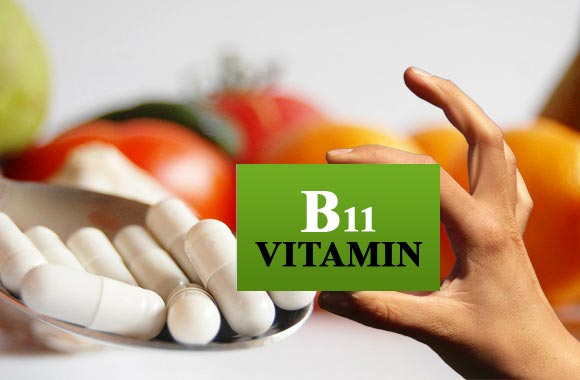
Vitamin B11 Benefits
Salicylic acid is an important beta-hydroxy vitamin also known as Vitamin B11. It is a crystalline and organic acid. Salicylic acid is obtained from the metabolism of salicin. This vitamin is also found in plants where it plays role in the growth and development of the plants as well as in various other functions such as photosynthesis, ion uptake, and transpiration. It is synthesized in the human body by the phenylalanine amino acid.
Sources
Vitamin B11 is present in both animal and plant kingdoms.
Animal sources: The sources from the animal kingdom are egg yolk, meat, liver, and poultry
Plant sources: The sources from plants are oranges, potatoes, as well as green leafy vegetables such as spinach, etc.
Functions
Vitamin B11 is very important for our good health. Vitamin B11 provides various health benefits to the body. Some of its necessary functions are as follow:
Vitamin B11 is accompanied by vitamin B12 take part in the formation of RNA and DNA,
It is also necessary for the growth and the formation of tissues of the body.
Vitamin B11 is extremely essential and plays role in the formation of the brain and the spinal cord in the fetus during embryogenesis.
This vitamin is also an important element of the red blood body and blood plasma.
Salicylic acid is used in the manufacture of certain creams for treating acne. It acts to correct the faulty desquamation function of the skin causing new growth off skin earlier while sloughing off the dead skin. It is found to penetrate the follicles, therefore, it is good and beneficial in the treatment of acne.
Salicylic acid is also beneficial in the treatment of psoriasis, corns, dandruff, calluses, warts, and many more skin diseases.
Deficiency
Vitamin B11 is very essential for the various function of our body. Deficiency of Vitamin B11 can result in
- Growth Retardation
- Tiredness and fatigue
- anemia
- Also seen feathering in chicks
Daily Dosage
Vitamin B11 should be used in proper dosage if taken as a supplement
Surplus
The toxicity of vitamin B11 has not been reported due to its excessive intake in the body.

Vitamin B12 Benefits
Vitamin B12 with its chemical names Cobalamin, Cyanocobalamin, and Methylcobalamin is the most potent vitamin and is also called anti-pernicious anemia vitamin. It was previously designated as extrinsic or food factor of Castle. Cobalamin was isolated in 1948 and synthesized in 1973.
Chemistry: It is a naturally occurring organic compound and contains cobalt. It is a water-soluble, deep red, tasteless crystalline compound. It is heat stable at neutral pH but not at alkaline pH.
Sources
This vitamin is synthesized by microorganisms. The liver and kidney are its chief sources but it also occurs in milk, eggs, and fish. Another source in man may be the bacteria present in the intestine but it is quite variable. Although not expected to be present in the plant products, a certain amount of B12 is present in the legumes which have become contaminated with bacteria which has to synthesize them.
Functions
In the body vitamin B12 taken in any form is converted into coenzymes B12 which are called carbamides. These enzymes do not contain –CN or –OH group but contain one of the following two groups attached to the cobalt atom.
Adenine nucleoside: This group is added to the mitochondria forming the active ingredient deoxyadenoslycobalamin. This is a cofactor for the mitochondrial mutase which catalyzes an important reaction necessary for carbohydrate and lipid metabolism.
Methyl Group: This group is added in the cytosol to the cobalt atom forming methylcobalamin; it is the coenzyme for methionine synthase which is essential for normal folic acid metabolism. The folic acid and vitamin B12 interaction are important for the synthesis of purines, pyrimidines, and DNA. Red blood cells suffer most from B12 deficiency because of their high turnover.
Deficiency
Megaloblastic Anemia: The anemia of vitamin B12 deficiency is really due to tissue folic acid deficiency. Vitamin B12 is in the form of methylcobalamin and it is a coenzyme for the reaction which forms methionine and releases THFA which serves as a carbon unit. This carbon unit plays a vital role in supplying purines and pyrimidines and DNA to the cells undergoing mitosis. In case of this vitamin deficiency there results in non-maturation of nuclei and failure of DNA formation resulting in bigger red blood cell production. Neurological symptoms may arise due to a decrease in methionine.
- Pernicious Anemia: In this disease also known as Addisonian anemia, is the primary defect in the absence of intrinsic factors in gastric juice. It shows severe anemia clinically along with mild jaundice, anorexia, flatulence, and diarrhea. There is also evidence of ineffective erythropoiesis and with very severe deficiency pancytopenia may also be seen.
- Gastric Resection and Intrinsic Factor Loss: This operation results in the loss of an important intrinsic factor.
- Pancreatectomy: In the absence of pancreatic proteases absorption of B12 is decreased.
- Dietary Lack
- Infestation with fish tapeworm (Diphyllobothrium latum)
- Blind loop syndrome
- Sprue
- Hereditary Malabsorption
- Drugs: These include colchicine, neomycin, ethanol, KCL, etc.
Surplus
There are as such no ill effects of vitamin B12 if it is ingested in high quantity.
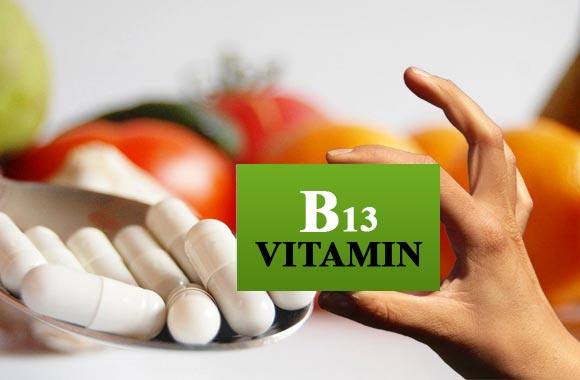
Vitamin B13 Benefits
Vitamin B13 has the chemical names orotic acid and pyrimidine carboxylic acid is the vitamin that is synthesized by the natural flora of the intestine. This vitamin is not been fully known until now. Only a few functions are recognized in our body. Orotic acid is one of the intermediate compounds in pyrimidine metabolism. Orotic acid results in the formation of an insoluble inorganic salt with a mineral called orotate. Many mineral nutrients such as potassium, calcium as well as magnesium are available in the form of orotate. These erotic forms of minerals are easy to absorb and used by the body. They can easily be transported from the gut into the blood with the help of orotate salts. As they reach the blood, the minerals get separated from the orotate. The minerals then become free and available to exert their therapeutic as well as psychological functions.
Sources
Animal sources: These include meat, especially beef.
Plant sources: It is found in the whey as well as in certain vegetables.
Physiological Functions
It is important for the metabolism of folic acid and vitamin B12.
Vitamin B13 (Orotic Acid) is found to be important in genetics.
It is used in the treatment of certain heart diseases as well as liver diseases.
It is good in the treatment of dangerous diseases such as multiple sclerosis (MS).
Vitamin B13 provides health to the skin as well as the hair and nails.
It prevents aging, particularly premature aging.
It is beneficial in those patients who have suffered from a heart attack; there it may prevent its recurrence in those patients. Especially magnesium orotate which is found useful in reducing the severity of heart diseases of chronic nature. It prevents heart remodeling as well.
Determination of orotic acid is found beneficial in delineating certain causes such as the cause of increasing levels of ammonia (hyperammonemia)
Orotic acid seems to have some direct effects on the metabolism of folic acid. Both folic acid and orotic acid take part in DNA synthesis. Its vitamin-like effects are thought to be because of this reason that it helps in DNA and RNA manufacturing in the body.
It is an important indicator of ammonia disorders related to its metabolism that can lead to illnesses or even death in people with inborn errors of metabolism as a result of a defect in the urea cycle or other genetic problems. People have abnormal liver functions because of some viral infections, drug abuse, or alcoholism, and people with bleeding from their digestive tract usually excrete increased levels of orotic acid in their urine.
Deficiency
Usually, deficiency of this vitamin is rare but in case of severe deficiency there arises the following signs and symptoms as follow;
- The appearance of crystals in the urine
- Degeneration of cells
- Impaired immunity
- Anemia
- Low vitamin B12 levels
- Problems related to heart
- Weight gain
- Large and abnormal-sized blood cells
- Skin problems
- Disorders within the liver
- Mental retardation
- Complaints of premature aging
Surplus
No known surplus effect caused by vitamin B13 is reported on its excessive intake.
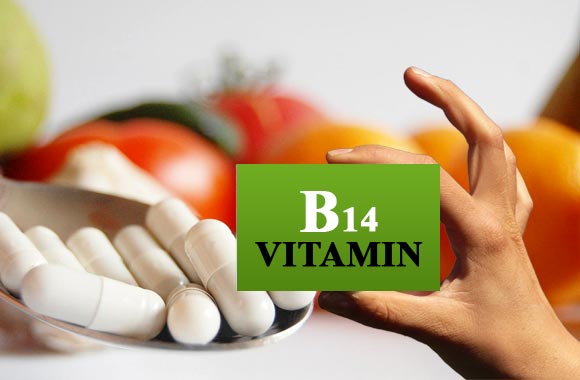
Vitamin B14 Benefits
There is currently little knowledge about vitamin B14. It was first isolated from wine. This vitamin is actually found to be a metabolite of xanthopterin. However, it was said by biochemist Earl R. Norris xanthopterin was the Vitamin B14. It is thought to be similar to vitamin 10 and vitamin 11.
Sources
Plant Sources: These include legumes, wine organs, grains, yeast, etc.
Animal Sources: These include meat, liver, kidney, heart, eggs, etc.
Functions
Although it has not been perfectly established as a vitamin it is found to play an important role in the body. Some of its functions are:
- It is very helpful in the formation of cells in the body
- It provides resistance to combat anemias
- Vitamin B14 provides enhancement of anti-tumor growth of protein such as pterin phosphate.
Deficiency
This is an important vitamin for the body and its deficiency may lead to the destruction of red blood cells, anemia, usually pernicious anemia as well as increasing growth of cancerous cells in the body.
Surplus
It is not been seen in the case of its excessive use.
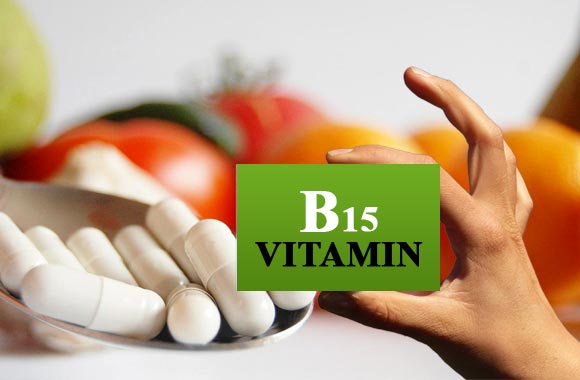
Vitamin B15 Benefits
Vitamin B15 has its chemical names Pangamic Acid, Pangametin, Calcium Pangamate is one of the water-soluble vitamins. It is not completely regarded as a vitamin. Pangamic acid (Vitamin B15) was first obtained in the year 1951 by Dr. Ernest Krebs, Dr. Sr., and Dr.Jr. from the apricot kernels.
Sources
It is found in animals as well as in plants. Some of its sources include eggs, oats, meat, apricot, kernels, pumpkin seeds, rice bran, sunflower seeds, Brewer’s yeast, sesame seeds, and torula yeast.
Functions
It decreases the severity of symptoms of rheumatoid arthritis such as pain and morning stiffness in the patients with this disease.
It causes relief of discomfort and pain in patients with osteoarthritis as well.
It causes Improvement in the capacity of the body to use energy from food and therefore provides extra energy for physical as well as mental work and for self-healing and repair.
It is found to be beneficial in premature aging prevention.
It causes detoxification of agents which may possibly cause cancer such as neoplasia-causing substances and all other types of pollutants and environmental poisons.
This vitamin causes early healing of injuries either abrasions or lacerations.
Pangamic acid forms methionine amino acids in our body.
Vitamin B15 is found to be beneficial in stabilizing mental and emotional problems.
It has an important role in the respiration of cells and glucose oxidation.
It acts as an important antioxidant.
It enhances the functions of the liver as well.
It is also found to provide protection against environmental pollutants.
Pangamic acid can also result in a mild degree of CNS as well as endocrine stimulation.
Vitamin B15 has been found helpful in the treatment of a number of diseases such as hypertension, rheumatic arthritis, asthma, and heart disease such as angina. Emphysema arteriosclerosis, liver cirrhosis, and hepatitis can also be get benefited from this vitamin 15
It is found to lower plasma cholesterol levels also.
Different types of Headaches can be treated with it.
It is also useful in cancer as well as in alcoholism.
Deficiency
The deficiency of this vitamin can impair its important function of formation of amino acids and antioxidant effects. The level of cholesterol may become high. Cancer-causing substances may also increase in the body. Impairment occurs in the oxidation of glucose and in cellular respiration.
Surplus
Toxic effects due to its surplus in the body have not been reported. Vitamin B15 only leads to nausea if eat it too much.
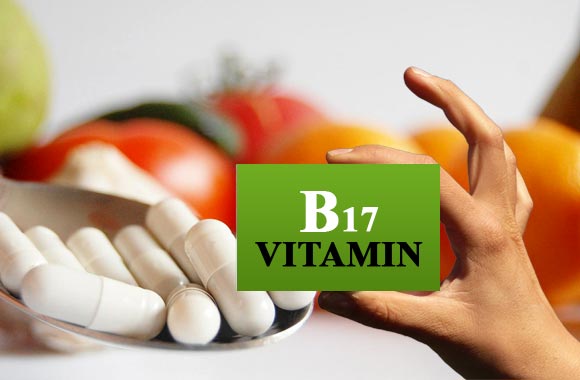
Vitamin B17 Benefits
Vitamin B17 is considered to be a vitamin of intense importance. It is chemically called Amygdalin, Linamarin Dhurrin, Triglochinin, Sambunigrin, Prulaurasin, Triglochinin, Linustatin, Neolinustatin, Laetrile, and Lotaustralin, etc. This vitamin is used in cancerous patients and is found beneficial to them.
Sources
This vitamin is richly present in fruits. The important Sources of this vitamin are buckwheat, millet, lima beans, apricot seeds, flax, cherry seed, kidney beans, loganberry, green beans, sweet potatoes, butter almond
Functions
This Vitamin is important for our good health and life. It performs various important functions.
One of the most important functions of this vitamin is its role being an anti-cancer agent, therefore, it is utilized in the treatment of cancer.
It is also helpful in reducing the pain caused by arthritis.
It causes a reduction increase in blood pressure to its normal value.
Vitamin B17 is very essential in maintaining the good health of our body.
It also gives a boost and strength to our body’s immunity system.
Deficiency
Because of its very important effect in acting as an anti-cancerous agent, its deficiency may lead to an increase risks of cancer in humans.
Recommended Dosage
The recommended dose is considered to be 25 to 100 mg.
Surplus
There are no such dangerous effects caused by the overdose of Vitamin B17, but still, there are changes in some food sources containing Vitamin B17, and eating such can even lead to poisoning. It has been found that the apricot seeds which are a rich source of this vitamin also contain cyanide which is proved to be poisonous if used in excessive amounts. The poisoning can result in very serious health effects.

Choline Benefits
Choline is an essential part of phospholipids e.g. lecithin, sphingomyelin, and certain plasminogen, and has a vitamin-like role in our body. It is lumped in with the B complex of vitamins and it is a water-soluble compound. It is a quaternary saturated amine.
Sources
It is not an essential dietary ingredient because it can be readily synthesized in the body provided the diet is otherwise adequate but it exists in a variety of sources. The animal and plant sources include:
Animal Sources: The best dietary animal sources of choline are egg yolk, liver, kidney, brain, heart muscle tissues, chicken, and nervous system.
Plant Sources: These include legumes, germs of grains, peanuts, grapefruits, seed meals, and green leafy vegetables.
Choline can be synthesized from serine provided the body has an abundant supply of one-one carbon units. It cannot act as a donor of methyl group but only after it is converted to betaine by oxidation.
Functions
It plays an important role in transmethylation reactions because it can act as a donor of the methyl group.
Choline is also utilized in the synthesis of acetylcholine. This acetylcholine is important for memory as well as the control of muscles.
It gives rise to important components of the cell membrane.
Choline acts as a lipotropic factor thus preventing the production of fatty liver.
High intake decreased the chances of breast cancer in women.
Choline lowers the level of cholesterol as well as homocysteine in our body
Deficiency
Its deficiency due to poor intake, eating vegetables only, alcohol consumption, or in athletes may lead to the formation of fatty liver as well as necrosis of the kidney. The renal functions get compromised. It may also lead to bone abnormalities, infertility, and retard growth along with hypertension. It is also evident that its deficiency may also lead to cancerous growth in the human body. It may damage the liver and blood vessels and lead to the formation of atherosclerosis. There also occur neurological manifestations. Choline should be included in the diet of pregnant women since its deficiency may lead to neural tube defects in the fetus. In pregnant women, deficiency may also cause premature birth or low birth baby as well as hypertension during the pregnancy.
Uses
It is used in the treatment of various diseases such as hepatitis or other liver diseases, atherosclerosis, bipolar disease, glaucoma, and Alzheimer’s disease. Chronic alcohol users can be get benefitted from its use.
Surplus
If choline is taken in an excess amount it may lead to its toxicity and the following signs and symptoms arise
- Diarrhea
- Vomiting
- A decrease in blood pressure
A syndrome called fishy body odor arises due to the inability of the patient to metabolize transmethylamine which is provided by choline.
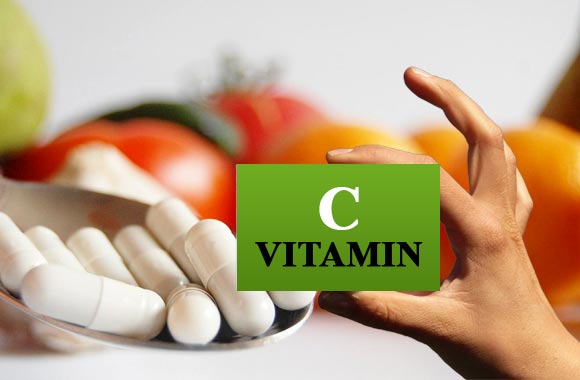
Vitamin C Benefits
Vitamin C is the L-ascorbic acid in man while the isomer D-ascorbic acid is biologically inactive. It is water-soluble white in color and an odorless substance with a sour taste. Ascorbic acid is easily destroyed by heat, oxidation, and exposure to air, especially in the presence of iron and copper ions. Alkalies also destroy it and therefore its absorption is decreased in achlorhydria. Its chemical names are ascorbic acid and ascorbyl palmitate. Man and other animals cannot make vitamin C in their bodies and for this reason, it is a vitamin for them. The inability to produce this vitamin is due to a lack of enzyme L-gluconolactone oxidase.
Sources
Fresh fruits and vegetables are effective sources of this vitamin; animal tissues are not a good source. Guava, citrus, fruit, and tomatoes are the best sources. Other sources are green pepper, onion, spinach, cabbage, turnips, melons, and potatoes. Milk is deficient in it, though human milk is richer than cow’s milk. One ounce of orange has about 22 mg of ascorbic acid which is sufficient for the daily needs of an infant.
Functions
Hydroxylation of Proline: Ascorbic acid (vitamin C) is involved n the conversion of proline present in the procollagen to hydroxyproline. This hydroxylation of proline is essential because in its absence collagen cannot form the trip helix required for the normal tissue structure. It also participates in the hydroxylation of lysine of procollagen to hydroxylysine. It also stimulates collagen formation.
Antioxidant: Vitamin C acts as an antioxidant along with other antioxidants, e.g. β-carotene, vitamin E, etc. It prevents tissue injury to the body tissues from toxic oxidation products. Studies have shown it is beneficial in high doses for protecting against cancer, hypertension, and coronary atherosclerosis.
Steroidogenesis: It is present in large amounts in glandular tissues, especially the adrenal cortex and corpus luteum; in these tissues, it appears to take part in reducing reactions involved in the synthesis of steroid hormones.
Help in Iron Absorption: It helps in reducing ferric to ferrous and helps in the absorption of iron from the intestine and in its utilization. It also takes part in the oxidation-reduction reaction systems coupled with glutathione, cytochrome, NAD+, etc. Due to its reducing properties, ascorbic acid is of some use in the treatment of methemoglobinemia.
Degradation of Tyrosine: It is also involved in the degradation of tyrosine to homogentisic acid.
It is taking part in the processing of certain polypeptide hormones such as oxytocin and antidiuretic hormone. It promotes their activity here.
Other reactions in which vitamin C is involved are the hydroxylation of dopamine to noradrenaline, synthesis of carnitine, formation of bile acids, and microsomal drug metabolism.
Deficiency
The deficiency of vitamin C results in a condition called Scurvy. Scurvy is liable to occur in artificially fed infants because of the low vitamin C content of cow’s milk and the destruction of vitamin C on boiling and pasteurization. Breastfed infants rarely suffer from this disease. Other sections of people who are liable to suffer from scurvy include elderly people living alone, alcoholics, and drug addicts.
Clinical Picture of Scurvy
There is disruption of layers of blood vessels leading to hemorrhages from the nose, mouth GIT tract, urinary tract, skin muscles, and subperiosteal tissues. The most frequent site of lesion is the gums which become spongy and show redness, swelling, and ulceration. Capillaries show increased fragility.
Surplus
Its excess can interfere with the absorption of vitamin B12, cause uricosuria, raise the blood level of exogenously administered estrogen, and can lead to the formation of urinary stones of oxalate type.

Vitamin D Benefits
There are two nutritionally important forms of Vitamin D in man, namely
Calciferol/Ergocalciferol (vitamin D2): It is produced by irradiation of ergosterol which was isolated from ergot. Thus, it is of plant origin.
Cholecalciferol (vitamin D3): It is of animal origin and can be produced in the malpighian layer of the human epidermis by ultraviolet rays which convert pro-vitamin D3 present in the skin to cholecalciferol.
Vitamin D is stored largely in the fat deposit. It is absorbed with the help of bile salt. It is then carried in the plasma and is excreted in the bile; some of the vitamin D is inactivated by the hepatic chromosomal drug-metabolizing system in the liver.
Sources
It is a unique hormone because it is derived both from sunlight and food.
Sunlight: Vitamin D is synthesized in the body by the action of ultraviolet rays of the sunlight on 7-dehydrocholesterol which is stored in large abundance in the skin. Exposure to UV rays is critical; these can be filtered off by air pollution. Dark-skinned races such as Negroes also suffer from this disadvantage because black skin can filter off nearly 95% of UV rays.
Foods: Vitamin D is found to occur only in the food of animal origin, which include liver, egg yolk, butter, cheese, and some species of fish. Fish liver oil is also the richest source of vitamin D. These days foods are fortified with this vitamin and these are milk, vanaspati margarine, and infant foods.
Functions
Function in Intestine: Vitamin D promotes intestinal absorption of calcium and phosphorus.
Effects on Bones: It stimulates normal mineralization, enhances bone resorption, and affects collagen maturation.
Effects on Kidney: Vitamin D increases tubular resorption of phosphate and it has a variable effect on the reabsorption of calcium.
Other functions of this vitamin include the enhancement of normal growth.
Deficiency
In growing children a deficiency of vitamin D causes rickets while in adults mostly in women its deficiency causes osteomalacia.
Rickets: This is a disease primarily due to vitamin D intake deficiency but also an inadequate supply of calcium, phosphorous and sunlight may also play a part. This disease is observed in children between the ages of 6 months to 2 years. There is reduced calcification of growing bones. This disease is characterized by growth failure, muscular hypotony, bone deformity, tetany, and convulsion as a result of hypocalcemia. There is also an increasing level of alkaline phosphate in the serum. The bony deformities include curved legs pigeon chest, deformed pelvis, Harrison’s sulcus, kyphoscoliosis, and rickety rosary.
Osteomalacia: In adults, osteomalacia is a result of decreased vitamin D intake. It is mostly seen in women of poor economic status or who have undergone repeated cycles of pregnancy and lactation. Lactation puts relatively more burden on the mother than pregnancy. The bones become even softer than in rickets. The bone-softening body weight causes the bowing of legs, shortening of the vertebra, and flattening of the pelvic bone.
Deficiency may occur due to:
- Decreased intake of vitamin D in the diet
- Decreased formation of Vitamin D in the skin in those living in areas without ample sunlight or in the population with dark skin or with thick skin.
- Malabsorption of vitamin D due to gastric surgery, chronic pancreatitis or chronic diarrhea, etc.
- Increased catabolism of vitamin D
- Renal Disease.
Surplus
It may lead to a condition called Hypervitaminosis D. An excessive intake of vitamin D over prolonged periods results in a raised serum calcium level, nausea, vomiting, anorexia, and digestive disturbances. There may arise kidney stones, calcification of body tissues especially renal arterioles, heart stomach, and the aorta, and irreversible kidney damage. In the case of infants, growth is retarded. Excess intake of vitamin D by pregnant women has been found to produce supra-valvular aortic stenosis in the fetus.
Daily Requirements
- Adults: 2.5mcg
- Infants and children: 50. Mcg
- Pregnancy and lactation: 10 mcg

Vitamin E Benefits
There are around eight compounds with vitamin E activity, all of which are tocopherols and named alpha, beta, gamma, epsilon, zeta, eta, and theta tocopherols. The first four compounds are of dietary significance. All these are derivatives of tocol. The most active and most abundant found vitamin E is the D-alpha tocopherol and it is biologically more potent. Vitamin E is a light yellow oil, stable to heat and acid. However, it is destroyed by commercial cooking and food processing including deep freezing.
Sources
It occurs in both animal and plant kingdoms.
Animal sources: These include meat, eggs, fish, liver, milk, and butter.
Plant sources: These are wheat germ oil, all green leafy vegetables, cereal, nuts fruits, cotton seeds, and sunflower seeds. Foods rich in polyunsaturated fatty acids are rich in vitamin E.
Absorption, storage, and excretion
The absorption of vitamin E is not very effective and only forty percent of it is absorbed. Bile salts and fats increase their absorption. In the body, it mainly occurs in the muscles and adipose tissues but pituitary and adrenal glands also have the highest concentration of it. It is excreted in the bile and to a later extent in the urine.
Functions
Vitamin E is a strong anti-oxidant and many effects linked to vitamin E may be due to its sparing action on vitamin A, coenzyme Q, and many other cellular constituents.
By the same mechanism, it prevents the formation of toxic peroxidative products such as those from unsaturated fatty acids.
This vitamin helps in maintaining the integrity of the lipid moiety of the membranes of the cells and cellular organelles such as mitochondria.
It may also possess a role in the electron transport chain.
Vitamin E acts as an anti-oxidant at high oxygen partial pressure e.g. in the RBC membrane, the membrane of the respiratory tract, and the retina. Due to its antioxidant action, it provides protection against diseases such as cardiovascular diseases or cancers.
Deficiency
In vitamin E deficiency RBCs become more susceptible to the hemolyzing action of hydrogen peroxide. The in vivo red cell survival time is decreased and may lead to anemia. So it has been found beneficial in certain types of anemias.
Children suffering from vitamin E deficiency show muscular lesions, decreased muscle creatine, creatinuria, and a raised serum creatine kinase level. Administration of vitamin E reverses all the changes.
Vitamin E deficiency has been found to result in lesions of the posterior white columns of the spinal cord, gracile and cuneate nerves. The clinical manifestation shows loss of reflexes, decreased proprioception, gait disturbances, vibratory sensations, and paresis of gaze.
Surplus
In large doses, vitamin E can lead to antagonization of vitamin K effects and thus prolong the prothrombin time in patients on oral anticoagulants by potentiating their actions.
Premature infants if given an excess amount of this vitamin, may show ascites with hepatosplenomegaly, cholestatic jaundice, azotemia, and thrombocytopenia.
Vitamin E in high dosage is also shown to have resulted in malaise, headaches, GIT disturbances, and possibly hypertension.
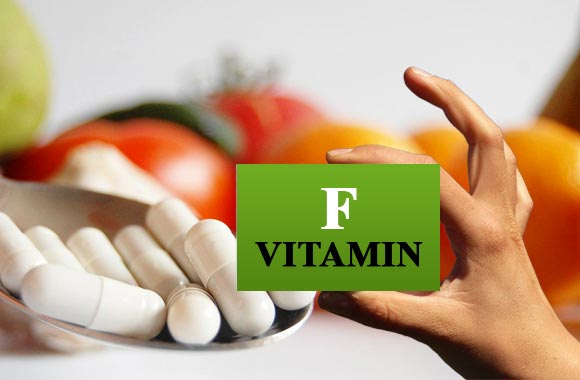
Vitamin F Benefits
Vitamin F or Fatty Acids are the acids occurring in natural triglycerides and are monocarboxylic acids ranging in chain length from 4 to usually 24 carbon atoms. They are yielded by fats on hydrolysis along with glycerol. Fatty acids are divided into:
- Saturated fatty acids such as lauric, palmitic, and stearic acid
- Unsaturated fatty acids are further divvied into monosaturated and polyunsaturated fatty acids.
Monounsaturated fatty acids: These fatty acids lower the total plasma cholesterol level but have no effect on high-density lipoprotein (HDL).
Polyunsaturated fatty acids: The nutritionally important polyunsaturated fatty acids may either be omega-3 or omega-6 fatty acids. Both of them cause a lowering cholesterol level but omega 6 has the disadvantage of lowering HDL also.
Polyunsaturated fatty acids are mostly found in vegetable oils while saturated ones are found in animal fats.
Essential fatty acids are those that cannot be synthesized in our body so they have to be derived only from foods. They are linoleic acid and α-linolenic acid and these are polyunsaturated fatty acids. Arachidonic is a semi-essential fatty acid. Among these most important essential fatty acids is linoleic acid which serves as a basis for the production of other essential fatty acids.
Sources
Linoleic Acid: It is abundantly found in vegetable oils such as corn oil, safflower oil, sunflower oil, soya bean oil, groundnut oil, sesame oil, mustard oil, coconut oil, and palm oil.
Arachidonic Acid: Its sources are meat, milk, and eggs.
α-linolenic acid: Its sources are soya bean oil and leafy vegetables.
Functions
Polyunsaturated fatty acids, linoleic acid, and α-linolenic acid are required for normal body functioning, and also because these cannot be made in the body, therefore these two fatty acids are necessary dietary ingredients. They have many important properties in our body and these are as follows:
These fatty acids are an important component of the phospholipids of the mitochondrial and cell membranes; they are found in high concentrations in reproductive glands.
A high concentration of linoleic acid occurs in cholesterol esters and this acid may have an important role in cholesterol transport.
The ingestion of this essential fatty acid especially omega 3 type causes a lowering of the plasma cholesterol level which is believed to protect the individual form of atherosclerosis.
These three polyunsaturated essential fatty acids act as an immediate precursor of a very important group of compounds called eicosanoids. The eicosanoids include Prostaglandin. Prostacyclin, Leukotrienes, and Lipoxins.
Deficiency
A deficiency of these three fatty acids results in stunted growth in a variety of animal species. In young rats, scaliness of the skin with loss of hair and a decreased reproductive capacity are seen. Early death takes place. In human beings, deficient intakes of these acids have been seen to affect the infant as well as the adult. The symptoms of its deficiency include dry, scaly, and thickened skin and impairment of growth.
Surplus
The increased amount of fatty acid (vitamin F) results in cholesterol deposition in the arteries leading to their thickness and certain cardiovascular diseases.
Recommended Allowance
It is recommended that approximately 5 grams of linoleic acid must be used daily.
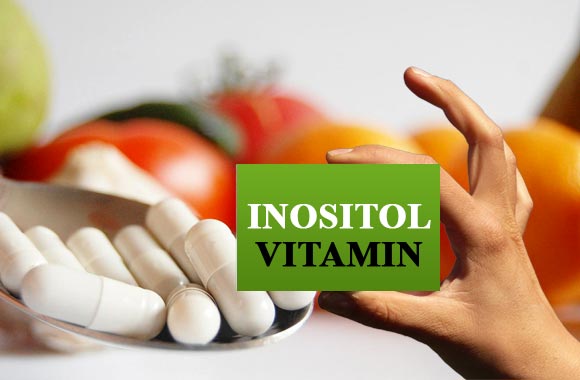
Inositol Benefits
The Inositol vitamin is Hexa-hydroxy cyclohexane. Of the nine possible isomers only the optically inactive isomer namely Myo-inositol is biologically active.
Sources
Inositol occurs in an appreciable amount in the animal as well as plant kingdom.
Animal sources: Inositol is found in meat. Liver, brain, muscles, red blood cells, and tissues of eyes. Milk and yeast also contain a considerable amount of inositol.
Plant sources: It occurs in the plant kingdom in fruits such as bananas, vegetables, grains, nuts, beans, and seeds.
It may also be synthesized from glucose 6 phosphate and in the human being, it is mostly manufactured in the kidneys.
Functions
Inositol as phosphatidylinositol 4, 5 bisphosphate is an important component of cell membrane phospholipids. When certain receptors present on the cell surface are occupied by their respective hormones which are ADH, acetylcholine, and catecholamines, the enzyme phospholipase C is activated. A unique protein termed G protein is involved in both the receptor binding and activation of phospholipase C. These give rise to very important second messengers which are 1, 2 diacylglycerols and inositol 1, 4, 5 trisphosphates. These exert the following reactions:
- 1, 2 diacylglycerol is an activator of protein kinase C, the activity of which is dependent on calcium ions.
- Inositol triphosphate releases large amounts of calcium ions from intracellular storage sites, i.e. mitochondria, sarcoplasmic reticulum, etc. The activated protein kinase C can phosphorylate specific substrates which show their specific effects. Various other hormones and hormone-like substances bring about their effects by similar actions.
Its function is to modulate serotonin activity.
It plays role in the guidance of nerves.
It promotes the growth of hairs.
It controls levels of estrogen in the body and therefore prevents breast cancer chances.
It is important since inositol breaks down fats and is therefore helpful in reducing cholesterol. It has been shown in humans to have a lipotropic effect.
It is excreted in a large amount in the urine of untreated diabetics and the amount excreted falls with insulin therapy. The seminal plasma is very rich in inositol but its role in this body fluid is still not known.
Deficiency
The significance of inositol in human nutrition is still unsettled. In case of its extreme deficiency, it may show loss of hair, skin diseases such as eczema, eye abnormalities as well as increased cholesterol levels. In mice, its deficiency may lead to growth retardation and peculiar hairlessness.
Surplus
There is no known toxic effect due to its excessive intake so far but it may lead to diarrhea.
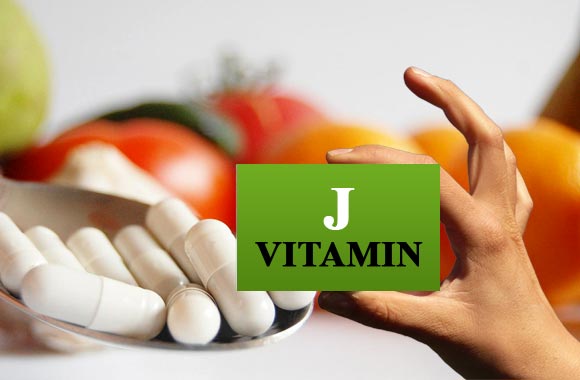
Vitamin J Benefits
Vitamin J is also known as Catechol and Flavin. We will discuss its importance under these two compounds. Very little is known about this vitamin. It has also been reclassified because of its major constituents. The scientists did not find catechol important to the body while flavin was found out to be the part of vitamin B2, the riboflavin.
Catechol: Catechol is an organic and colorless compound that is found in trace amounts in our bodies. It is also called flavenoid. It being crystal has a characteristic appearance of feathery white. It is soluble in water.
Flavin: Flavin forms the part of flavin adenine dinucleotide which acts as a cofactor, flavin adenine mononucleotide, flavin-containing oxygenases as well as riboflavin. Riboflavin is vitamin B2 that is essential to our body.
Sources
Vitamin J is found to occur in vegetables and fruits.
Catechol: Catechol is present in the polyphenol oxidase. Other sources include apple and potato and woody plants. We see when we cut them, and leave them for some time their color changes to brown color and it is due to the presence of this catechol. It is also produced by microorganisms e.g. Mycobacterium tuberculosis.
Flavin: Likewise flavin is also widely distributed.
Animal Sources: It is found in bread products, milk pasta, whole grain products, rice fish, meats, and poultry
Plant Sources: It is present in vegetables such as turnips, broccoli, greens beans spinach and asparagus, etc.
Functions
Both this catechol and flavin perform important functions in the body.
Catechol: Catechol is essential as it is the part of catecholamines that acts as important neurotransmitters. It also forms a part of the hormones of the body.
Flavin: Flavin being the riboflavin plays important role in our body. Flavin in the form of flavin adenine dinucleotide and flavin adenine mononucleotide carries out various biochemical reactions in the body. They act as a catalyst in our body. Riboflavin is also involved in the manufacturing of methionine from homocysteine.
Deficiency
The deficiency caused by catechol is not so significant since it is required in very small amounts and is not so essential to the body.
Flavin being riboflavin can lead to visual impartment along with photophobia and conjunctivitis, stomatitis, sore throat, and skin problem which become scaly due to riboflavin deficiency.
Surplus
There is no evidence regarding this catechol and flavin toxicity both of which are the constituents of vitamin J. So this vitamin J is overall safe to use.
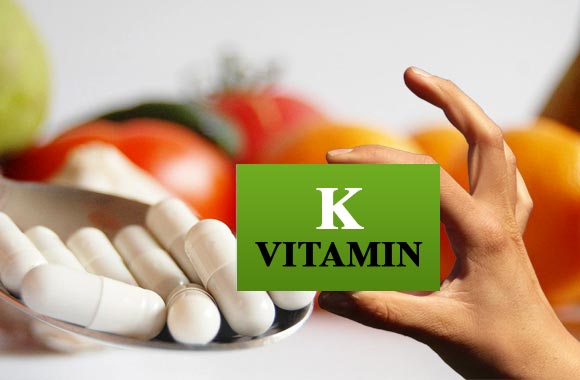
Vitamin K Benefits
The name vitamin K stands for Koagulation vitamin which was given by Dam, a Danish scientist, as a substance that prevented hemorrhagic tendency. Its chemical names are Phytomenadione, Menadione, Phylloquinone, and Menaquinone. It is fat-soluble and heat-stable but is sensitive to light and oxidizing agents. It occurs in two major forms, vitamin k1, and vitamin k2. These all vitamins K have a basic ring structure which is 2 methyl 1,4 naphthoquinone. There is another vitamin the vitamin K3 also called menadione. It is prepared synthetically.
Sources
Vitamin k1 is present in most edible vegetables especially in fresh green leaves and in some fruits. Cow‘s milk is a richer source.
Vitamin K2 is produced by intestinal bacteria, which usually provides an adequate supply in man. Long-term administration of antibiotic doses for more than a week may temporarily suppress the normal intestinal flora and may cause a deficiency of Vitamin K.
Absorption
Bile salts are needed for vitamin k absorption when they enter the blood byways of lymph. Vitamin K is stored in the liver.
Recommended Doses
The daily requirement for men appears to be 0.03 mg/kg for adults. Newborns tend to be deficient in it so soon after birth they should be given an intramuscular dose of vitamin K.
Functions
The most important function of vitamin k is that it helps in the formation of blood clotting factors prothrombin, VII, IX, and X by the liver. It is also essential for the posttranslational conversion of glutamic acid residues of all these proteinous clotting factors to gamma carboxylic glutamic acid.
It appears to have some role in the electron transport system because its structure is similar to coenzyme Q. In the plant kingdom, vitamin K1 is an essential component of the photosynthetic process.
Deficiency
Although vitamin k deficiency does not stop the liver from producing prothrombin, factors VII, IX, and X but these factors lack physiological activity due to the inhibition of carboxylation of glutamic acid residues of molecules. There is an increase in the prothrombin time showing a deficiency of prothrombin. Clotting time is prolonged with a tendency to bleed profusely from minor wounds or even spontaneously. Bleeding occurs mostly from the gastrointestinal tract, urinary tract, and uterus; ecchymoses and epistaxis are also observed.
Many conditions are associated with a deficiency of vitamin K and these may lead to bleeding tendencies. These include:
Faulty vitamin K absorption due to lack of bile occurs in obstructive jaundice and biliary fistula.
Diarrheal diseases e.g. sprue, celiac disease, and ulcerative colitis interfere with this vitamin k absorption.
Administration of multiple broad-spectrum antibodies may lead to its deficiency
In newborn babies especially premature ones since vitamin K does not easily cross the placental barrier.
In patients of uremia who are on parenteral nutrition.
Drug administration has vitamin k activity.
Surplus
The excessive use of vitamin K can block the effects of oral anticoagulants. When given to pregnant women, it can lead to jaundice in the newborn.
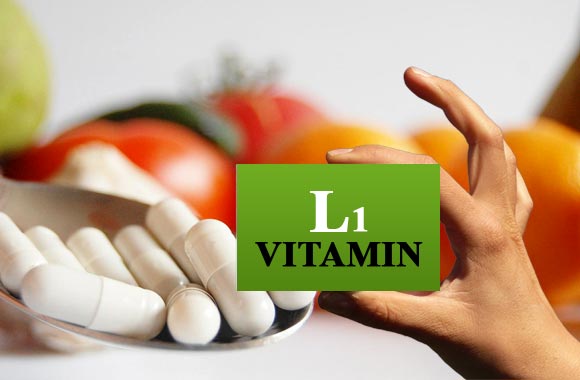
Vitamin L1 Benefits
Vitamin L1 with the chemical names ortho-aminobenzoic acid and anthranilic acid is an organic vitamin and is also considered to be an amino acid as well. It is a white solid in the case when it is pure but commercially appears yellow. Vitamin L1 molecule contains benzene ring having two adjacent functional groups, namely
- Amine and
- Carboxylic acid
This anthranilic acid being an aromatic amine possesses a sweet taste and is flammable and can give rise to fumes of nitrogen oxide on burning. It is sensitive to exposure to light as well as air over a prolonged time. It exists as a metabolite of tryptophan in the body. Chorismic acid results in its biosynthesis in the body. These vitamin effects can be synergized when used with vitamin B and vitamin C. Even some drugs such as antidepressants can be synergized when used with this vitamin L1. Sedative drug effects are also thought to be enhanced when taken with vitamin L1.
Sources
- The known sources of vitamin L1 are the yeast and bovine liver.
Functions
Vitamin L1 plays role in the metabolism of benzene amino acids or aromatic amino acids.
Vitamin L1 is the precursor of a very important amino acid the tryptophan amino acid.
It also causes this amino acid synthesis means tryptophan as well as serotonin and, therefore, provides essential amino acids and neurotransmitters to the brain and so provides an improvement in disposition.
It has also been thought to be an important factor of lactation which is very necessary for females.
It provides good effects on the skin if is suffering from some chronic disease.
It is also beneficial for diseases of hair as a result of amino acid and protein diseases/disorders.
Vitamin L1 has been found to have an antidepressant function since it gives rise to serotonin, an essential component for good moods and whose deficiency can result in depression in a person.
This vitamin is also found to have a role as an anti-inflammatory agent in the body.
So this vitamin L1 can be used as a prophylactic measure in case of any stress or depression, hair or skin problem, and for enhanced lactation.
It increases the effects of various antidepressants as well as hypnotics. It also enhances the action of vitamin B and vitamin C in the body.
Deficiency
Usually, deficiency of vitamin L1 rarely occurs. In case of its severe deficiency, it can lead to problems with lactation.
Surplus
Surplus effects or symptoms of vitamin L1 have not been determined and so it does not lead to toxicity if taken in excess.
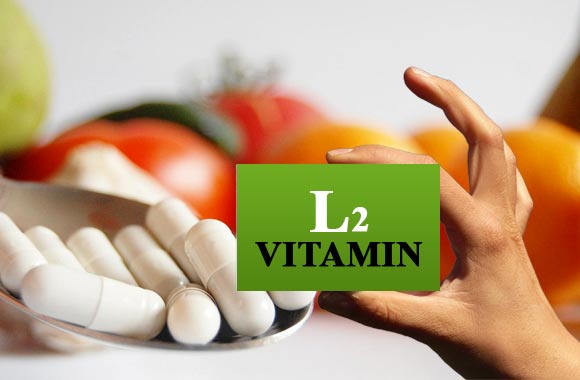
Vitamin L2 Benefits
Vitamin L2 having the Chemical name Adenyl Thiomethylpentose is not so essential vitamin of the body. It is now reclassified as being the RNA metabolite that is synthesized in the body. It is the aromatic amine. The aromatic amine mostly occurs as a metabolite of amino acid and its usefulness is found in dye synthesis. But this vitamin occurs as an RNA metabolite. This vitamin was first obtained from yeast.
Sources
These include yeast, crude cozymase, and oryzanine.
Function
Very little information about this vitamin is known.
It is found to be important in lactation where it enhances it in females.
Vitamins L2 play the role of a catalyst and combine with the various proteins present in the body to produce the many enzymes important in the metabolic activities of the body.
Deficiency
This vitamin deficiency rarely occurs since it is required in a very small amount in the body.
The deficiency of vitamin L1 causes some dysfunction within the vital organs of the body.
The most important problem which arises due to its extreme deficiency is lactation problems in women.
Surplus
The symptoms produced by a surplus of this vitamin have not been recognized and vitamin L2 is generally considered safe and free of any toxic effects.
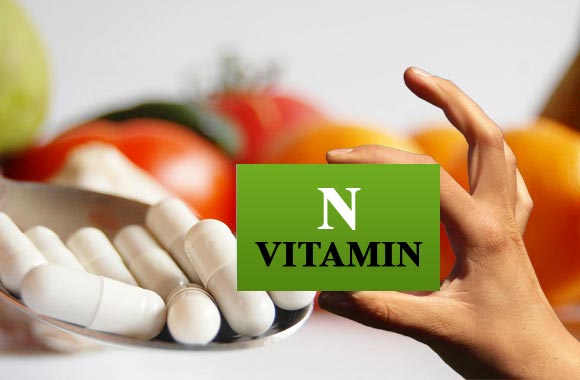
Vitamin N Benefits
Vitamin N is thought to be a vitamin having chemical names thioctic acid or alpha-lipoic acid. Alpha-lipoic acid is a sulfur-containing fatty acid. It is present intracellularly in the body, and here in the cells, it causes the generation of energy that is necessary to keep our body functioning normally and alive. It is an antioxidant that is synthesized in our bodies. Lipoic acid is an important component of the metabolic machinery that produces energy from glucose necessary for us. This α-lipoic acid is soluble in water as well as in lipids.
Sources
Our body itself synthesizes this vitamin N, especially the α-lipoic acid. So it is not necessarily to be taken from food sources. However, it may be found in the following food sources: liver, heart, kidney, broccoli, spinach, and yeast extracts.
Functions
This vitamin N acts as an antioxidant and attacks the free radicals and other reactive oxygen species that are very dangerous to the body. Therefore, this action, prevents liver damage, heart damage, and also various other organs from the damage caused by these free radicals. It acts in the water areas of the cells as well as in the fatty acid and detoxifies the harmful substances. It works along with vitamin E and vitamin C in providing this important antioxidant function. It also causes the recycling of the other antioxidants so they remain available in good amounts in the body.
Vitamin N is also necessary for oxidative decarboxylation of pyruvic acid and alpha-ketoglutaric acid.
It has been found to be beneficial in treating type 2 diabetes mellitus because its increases glucose breakdown or burning.
Alpha-lipoic acid or thioctic acid functions in the body in 2 ways:
- It causes the conversion of food into energy and provides protection through its antioxidant action.
- It is found to be essential in the citric acid cycle.
This vitamin N assists in the production of cellular energy which is ATP. It does this process by working as a catalyst and producing the acetyl-coenzyme. So its main function is to provide energy to the body.
It plays an important function in the mitochondria which are the energy-producing organelles in cells.
The alpha-lipoic acid helps in protecting the mitochondria as well as the genetic element of the body, the DNA.
Being soluble in lipids and water, vitamin N can readily enter all parts of the cell and then provide protection there within the lipid cell membrane and in water compartments, and also in the nucleus. This function is important for preventing aging.
This vitamin also acts as an anti-inflammatory agent as it can rapidly enter the cells’ interior.
It is found helpful in the treatment of burning mouth syndrome.
Therapeutic Dosage
The therapeutic dosage of lipoic acid orally use for the treatment of diabetes complications is around 100mg-200 mg thrice daily.
If it is used as a general antioxidant 20mg-50 mg per day dosage is found beneficial daily and is also commonly recommended.
Deficiency
Deficiency of vitamin N rarely occurs. In case of its extreme deficiency, it will lead to the loss of its antioxidant effects on the cells.
Surplus
There are no such toxic effects seem when it is ingested in very large amounts.
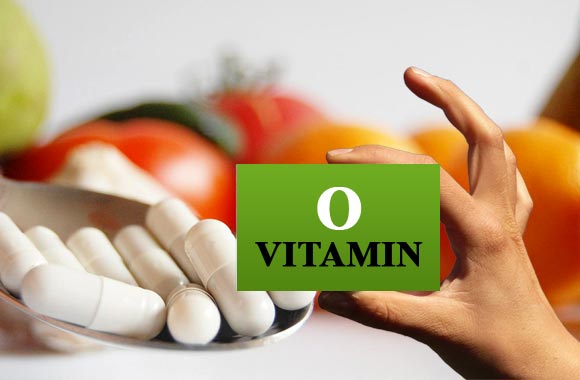
Vitamin O Benefits
Vitamin O is considered to be a good vitamin for the body. Its chemical name is L-Carnitine or Acetyl L-Carnitine. Carnitine is synthesized in the body from the lysine amino acid and methionine amino acid. It exists in two stereoisomer forms namely:
L-carnitine is a biologically active form.
D-carnitine is a biologically not active form.
In the living cells of the body, the importance of this vitamin O lies in the fact that it is needed for the transport of fatty acids present in the cytosol to the mitochondria this occurs during the process of catabolism of fats and this process takes place to generate the metabolic energy. This vitamin O is also called Vitamin Bt since it was originally extracted from the mealworms as a growth factor and is called vitamin Bt.
Sources
Animal sources: It is richly present in animal foods and is obtained from red meat, beef, liver as well as kidney, milk, and milk products.
Plant sources: It is found in a variety of seeds such as sunflower seeds, pumpkin seeds, and sesame seeds. It is found in nuts, pulses, legumes, lentils, beans, peanuts, vegetables such as asparagus, broccoli, garlic, parsley, beet green, etc, in fruits such as bananas and apricots as well as in whole wheat rye, rice, and wheat bran.
Functions
Carnitine helps cause the transport of the long-chain acyl group to the mitochondria. This is important since they cannot be entered in their original form and are needed to be utilized in the beta-oxidation process. This process provides energy to the body.
This vitamin also provides antioxidant actions to the body. Such actions are necessary to prevent damage to body organs from harmful substances as well as prevent premature aging. This thing also protects us from the dangerous effects caused by the lipid peroxidation process of phospholipids membranes. We can also be saved from oxidative stress which occurs usually in the heart muscles and the cells’ endothelium by this vitamin O use.
It is found to be effective for the bones of the body and increases their strength and makes them stronger.
This vitamin has found very beneficial pharmaceutical effects as well:
- Vitamin O supplements are used in the treatment of heart disease because it provides beneficial effects on angina in which chest pain of crushing nature occurs, and after myocardial infarction.
- It can be taken as a weight-loss supplement.
- It should be used in cases the kidney is damaged and the person is undergoing dialysis. Because here its levels get low due to kidney disease.
- If a patient is suffering from hyperammonemia, this carnitine can be helpful in lowering these disease symptoms.
L -carnitine is beneficial for the neurotransmitter of our brain, especially in adults where it improves their functions remarkably. It is beneficial in the case of encephalopathy.
It causes improvement in the quality of sperm production in males and, therefore, can be used to treat infertility.
Its good effects can also be utilized in case of liver toxicity.
Deficiency
It can lead to osteoporosis because of its effect on the osteoblasts cells of the bones.
Fatty oxidation can also be impaired in case of its deficiency.
Beneficial antioxidant effects cannot be achieved.
Surplus
There is no evidence regarding toxicity produced by excessive use of vitamin O.
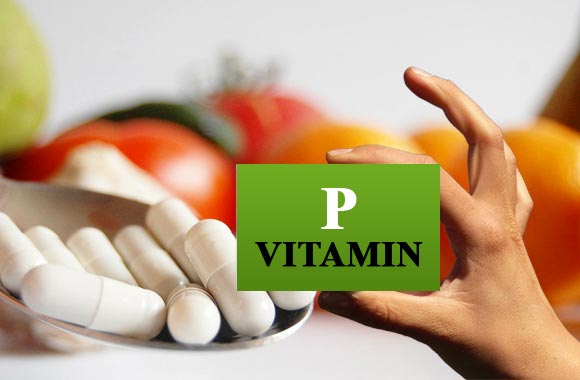
Vitamin P Benefits
This substance was isolated from red peppers and citrus fruits which was able to control hemorrhage in men and guinea pigs. This compound proved to be different from ascorbic acid. It was designated vitamin P because it was thought to be involved in controlling the permeability of capillaries and was first isolated from paprika. Rutin, citrin, hesperidin, and esculin are compounds that possess vitamin P-like properties. It is a water-soluble vitamin of much importance. The word P in this vitamin stands for permeability. It is actually partly composed of bioflavonoids. It can be measured in milligrams.
Sources
Vitamin P is naturally present in certain foods. These include blackberries, apples, citrus fruits, onion, cherries, red pepper, Brussels sprouts, quercetin from beans, and apricots. Chocolates are also found to contain it as a flavonoid is present in cocoa.
Functions
Vitamin P promotes Vitamin C use and intake in our body. It causes its prevention from damage that might be caused by oxidation.
It provides resistance to infections and enhances our immunity.
Vitamin P also controls the permeability of the capillaries of our body and thus causes them to be stronger and work more efficiently for a prolonged period of time.
Flavonoids can cause changes in viruses, and carcinogens and also act as the response modifiers of the biological field.
These flavonoids also provide important properties in the form of their ability to act as anti-cancerous agents, antiallergic agents, antimicrobial agents, antidiarrheals as well as anti-inflammatory.
The most important activity noted by vitamin P (flavonoids) is that they provide antioxidant properties to the body as well. It can be seen after ingesting foods containing flavonoids. It has also been found that the antioxidant activity of vitamin P is stronger as compared to other antioxidants of the body such as vitamin C and vitamin E.
Vitamin P also helps to provide relief from allergies, hypertension, ulcers, and wound healing.
This vitamin also provides medicinal value as it can be used in patients with heart disease.
It is also found to act as a natural diuretic.
This vitamin is good for our skin. It keeps our skin fresh and healthy since it works with vitamin C as well. Both provide good effects on the skin.
Deficiency
Due to its deficiency in the body, the capillaries of our blood system become weak and it is the earliest sign seen in the case of vitamin P deficiency. There may occur epistaxis means bleeding from the nose. The person could not utilize the vitamin C properly also.
Recommended Dosage
Vitamin P can be used in supplement form and combined with multi-vitamins or other complex formulas and is used alone too. Although no exact dosage is recommended for this vitamin, a dose of 50mg can be used without any hazardous effects.
Surplus
The diets rich in this vitamin in pregnant women can result in the development of acute myeloid leukemia in her child. This is because flavonoids can inhibit topoisomerase and can result in a mutation in DNA.
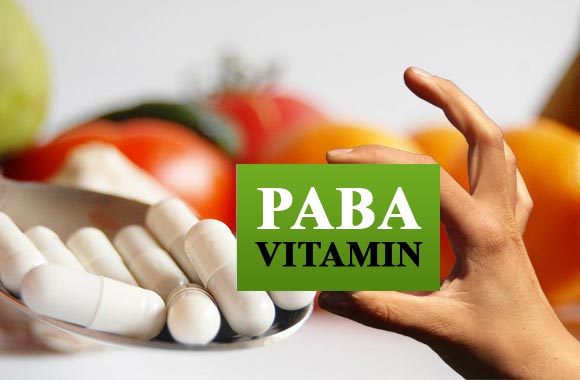
Vitamin PABA Benefits
Para-aminobenzoic acid (PABA) is the vitamin that is commonly known as the sunscreen vitamin. It is not protein but is found to be part of the vitamin B group and is the moiety of the folic acid form, the PGA. It acts as a coenzyme and also as an antioxidant.
Sources
PABA is available in a variety of forms. It is available in foods of dietary importance as well as a supplement in the form of pills. Some of its natural sources are
Animal Sources: These include yeast, eggs, liver, meat, kidneys, etc.
Plant Sources: Plant foods containing para-aminobenzoic acid are spinach, molasses, whole grains, rice, mushrooms, etc.
This vitamin is produced by the bacteria present within our intestinal tract or digestive system.
Functions
Being an antioxidant it causes detoxification of various harmful substances produced in our body.
Being a coenzyme it supports blood cell and their good health. It is especially important for red blood cells. It causes the promotion of their formation as well as processes of metabolization within them.
It causes improvement in protein utilization in the body. It causes a breakdown in the body.
It causes maintenance of the natural flora of the intestine.
It’s also been found to be important in healthy hair growth and is also very important in preventing the loss of hair.
The use of para-aminobenzoic acid in sunscreen is a wonderful function as it protects the skin from the harmful rays of the sun. It protects us from ultraviolet light which is quite dangerous and can cause skin cancer.
For skin, it also provided beneficial effects and cures us of diseases such as vitiligo which can make us look worse. But by this vitamin use, we can be safe from it. It is even used in this treatment along with the treatment of hypopigmentation also.
Other diseases which can be treated by PABA oral use include dermatomyositis, pemphigus, lymphoblastoma cutis, and morphea.
It is seen that it can provide beneficial effects for women who are suffering from infertility.
PABA is also utilized in the treatment of arthritis, systemic lupus erythematosus, fever, and constipation.
Deficiency
The deficiency of PABA in our body can lead to certain gastrointestinal problems. These include complaints of chronic constipation as well as irritable bowel syndrome. These are mostly noticed with their deficiency in the body. As this vitamin is an important ingredient of sunscreen and is also important for the skin and hair, its deficiency can cause the premature formation of wrinkles on the skin and premature hair graying. UV rays can also damage the skin if we don’t apply sunscreen containing PABA.
Dosage
There is no recommended daily dosage for PABA but it is set to 55mg -1000mg for a healthy person. Although this vitamin is generally safe and considered non-toxic, still there are people who complain of allergy to this PABA.
Surplus
In case of its excess in the body, it can lead to a reduction in vitamin D formation. There arise symptoms of skin rash, nausea, and vomiting. Since it is stored in the body if taken in excess, this can lead to liver damage also.
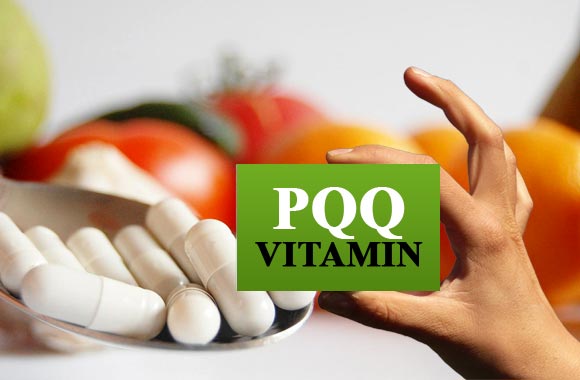
Vitamin PQQ Benefits
Pyrroloquinoline quinone is an organic element that is obtained from bacteria and is a reduction-oxidization cofactor like nicotinamides and flavins. Pyrroloquinoline quinone (PQQ) is considered to be one of the important nutrients for humans and is thought to be a vitamin. It is a member of group B complex vitamins. It was found by J.G. Hauge who called it the third redox cofactor. It is found to be water-soluble. It causes the activation of various signaling molecules. It contains vitamin B12 along with quinone in its structure.
Sources
Pyrroloquinoline Quinone is found in a variety of food sources. It is found in tea, natto, papaya, tomato, soybean, kiwi fruit, egg, banana, spinach, tofu, milk, etc
Functions
Pyrroloquinoline quinone is important for the mitochondria where it supports its health. It promotes biogenesis in mitochondria. Therefore it improves the utilization of energy in them.
It acts as an ant-oxidant and causes the removal of dangerous substances from the body. In this way, it protects from oxidative stress.
It is found to cause the breakdown of amino acids.
Pyrroloquinoline quinone causes immense improvement in our cognitive behavior also. It protects our memory and is called neuroprotective. Its uses can cause the production of new nerve growth factors in the cells of neurons.
It also protects the brain from ischemic perfusion injuries which can cause oxidative damage to the brain.
It also affects the immunity of the body.
Because of its important antioxidant functions as well as signaling activation it can use to protect an individual from aging. It acts as an anti-aging vitamin in our body.
It also causes the activation of certain signaling molecules. Such as peroxisome proliferator-activated receptor-gamma coactivator 1 alpha (PCG-1alpha), DJ-1, and cAMP response element-binding protein (CREB).
- The PCG alpha is important since it can lead to direct stimulation of cellular and mitochondrial respiration.
- DJ-1 causes the prevention of apoptosis of cells and is important in cell survival and life.
- CREB interacts with the histones which are essential for DNA protection and repair. This can also result in the stimulation of the growth of new mitochondria in the body.
It has also been found that pyrroloquinoline quinone protects our heart after myocardial infarction also. It is considered a good treatment along with other drugs like beta-blockers for heart attack treatment.
It provides resistance in the heart muscles and therefore protects them from oxidative stress damage.
Deficiency
Lack of this important vitamin results in a slowing of the mitochondrial energy utilization process. The biogenesis of mitochondria cannot take place effectively. It affects the mitochondria of the heart as well as the liver. There also occurs impairment in the metabolism of proteins such as lysine. The important signaling molecule cannot be stimulated than to provide their essential effects on the body. Its antioxidant beneficial property can be depressed and our brain and heart would be at increased risk of getting harmed by oxidative stress. The deficiency of PQQ can also lead to poor cognitive functions.
Surplus
The effects due to Pyrroloquinoline Quinone excess have not been determined.

Vitamin Q Benefits
Vitamin Q has its chemical name the coenzyme Q10 which is also further known as Q10, CoQ10, ubiquinone, vitamin Q10, or ubidecarenone is considered to be a vitamin. It exists in almost every cell of the body. It can be accumulated in the heart, liver, pancreas, and kidneys. Some of its amounts are also present in the lungs. Coenzyme Q10 levels decrease with age or as the individual gets older. This vitamin Q is essential for the normal functioning of the cell and can be utilized in treating diabetes, Alzheimer’s disease, and obesity.
Sources
Since this vitamin is a component of the family of ubiquinone compounds so it is present in a variety of food sources. These include organ meats, polyunsaturated vegetable oils, spinach, and some fish such as sardines and tuna.
Functions
Vitamin Q is a vitamin necessary for the normal functioning of certain enzymes. Some of its important functions are as follow:
Vitamin Q provides an improvement in the muscles of the heart and their metabolism
It can be utilized by the cells to produce energy which is essential for the growth of cell and their maintenance.
It has one of its most important functions i.e. it acts as an antioxidant and this property enables the body to be protected from the harmful effects of the various free radicals and dangerous substances produced as a result of the metabolism of substances in our body.
Vitamin Q is also found to enhance our immune system.
It can prevent coronary insufficiency and therefore protect us from hearing failure.
This vitamin Q can be used in the treatment of diseases of the gums.
It is found essential for the functioning of the healthy nervous system as well as the cells of the brain.
It boosts the level of energy in our body and makes us active and strong.
It improves the heart function as well as the circulation in a patient having congestive heart failure, poor heart muscle tone, hypertension, chest pain, and arrhythmias of the heart.
It provides maintenance of healthy gums and teeth.
It protects the body from thrombus formation, chronic types of fatigue, heart attacks, and other disorders linked with damages caused by free radicals including aging and neoplasia.
It protects our neurons of the brain and helps in slowing the progression of Parkinson’s disease or Alzheimer’s disease.
Deficiency
Deficiency of this vitamin can result from insufficient dietary intake of this vitamin, any impairment in its biosynthesis, or excessive use of this vitamin Q by our body. This results in the gingiva, ulcers in the stomach, feelings of fatigue, and malaise.
Dosage
There is no recommended dose for vitamin Q but it was said that using 15mg- 30 mg per day is good for our health.
It can be taken in the form of supplements as well since it provides important antioxidant action in the body. Heart and brain functions can be enhanced greatly with their use.
Surplus
In case its toxicity occurs due to excessive use, no dangerous symptoms have been noted so far.
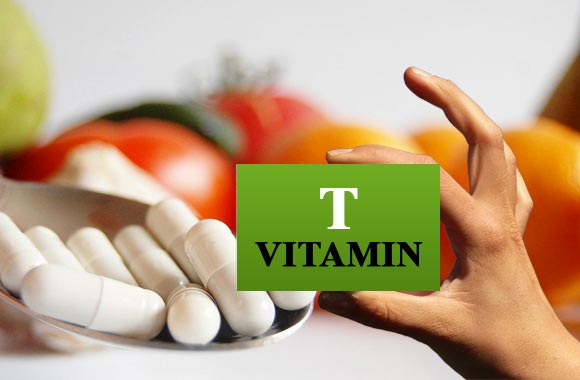
Vitamin T Benefits
Vitamin T is a substance that is considered a vitamin but still, it doesn’t meet the standard definition for the vitamin. Its chemical names are Tegotin, Termite, and Torutilin. It is good for improving our memory and concentration towards anything and it also strengthens the red blood cells. In spite of its health benefits for the body very little information is known about it. Vitamin T term is also used as slang for the testosterone hormone or tequila. Vitamin T is a water-soluble vitamin. Vitamin T is not heat resistant and can easily be destroyed.
Sources
Vitamin T occurs in tahini, fungi, sesame seed, yeast, egg yolks, and termites.
Functions
This vitamin can lead to an increased strengthening of the red blood cells.
Since it causes bolstering of blood cells, it can be effective in combating blood-related disorders such as hemolysis as well as anemia.
This vitamin T can cause growth promotion of the cells of the body.
It maintains the integrity of the platelets. The platelets are important clotting factors. Without them, bleeding cannot be stopped.
Vitamin T increases and sharpens our memory. It results in enhanced concentration as well.
RDA
Its daily recommended dose has not been established. This vitamin T can be used in the form of supplements.
Deficiency
Being needed in the body in a very small amount, its deficiency cannot lead to mark effects. But in case its deficiency is severe enough it can lead to the development of anemia as well as retardation in growth. A person can become fatigued by having a poor concentration on anything.
Surplus
If vitamin T is taken in excess, no harmful effects will occur since no toxicity caused by this vitamin has been evident.
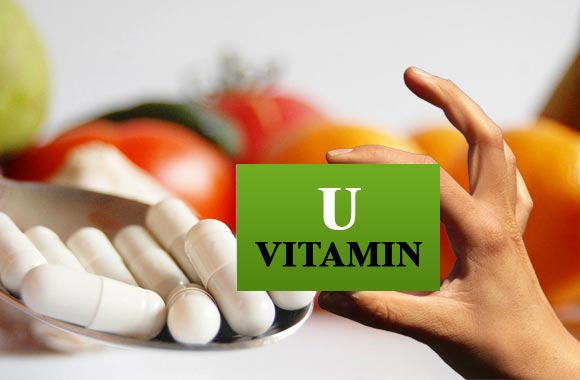
Vitamin U Benefits
Vitamin U is not a vitamin in real terms, but mostly it is used to describe the enzyme methyl methionine. Its chemical names include Methylmethioninesulfonium Chloride, Cabagin-U, and S-methyl methionine. It has been found in the treatment of a variety of ulcer types, especially gastric ones. The results of its use come out to be promising, but not conclusive. It is synthesized in different plants as well as in our body from amino acid methionine with the help of the enzyme methionine S methyltransferase. This vitamin was discovered by Cheney an American scientist in the years of late forty’s.
This vitamin can be artificially synthesized and in this form, it is a white crystal. This vitamin U is highly soluble in water. This synthetic form can be utilized in the treatment of ulcers but it is not so effective.
Sources
It is found in both animal as well as plant kingdoms.
Animal Food Sources: These include cheese, raw egg yolks, milk, and the liver also.
Plant Food Sources: This vitamin is present in all vegetables such as cabbage either raw or fresh, its juice, celery, parsley, carrot, onion, beet peppers, asparagus, tomatoes, spinach, and turnips. It is also present in the green tea as well as the juices made from raw potatoes
Functions
This vitamin is utilized in the treatment of ulcers of vast varieties. It can treat skin ulcers, duodenal ulcers as well as gastric ulcers. Here it promotes the healing of the defect of the mucous membrane caused by these ulcers. It also causes inactivation of the metiliruya histamine and this thing is necessary to control the secretion of gastric acid. Doing this provides relief from the pain as well as enables early recovery from these ulcers.
It can be used to provide relief from diabetic symptoms.
It enhances our immune system and protects us from infections. It creates resistance against infections.
Vitamin U has also been found to possess some antihistamine-like effects. It reduces the severity and complaints caused by allergies either food allergy or nose allergy hay fever, asthma, etc.
It can be used to treat different skin diseases as well.
Its important constituent methyl methionine is also able to prevent liver damage. This damage can be a result of various drugs or infections.
It provides lipotropic effects on lipid metabolism and therefore protects the liver from damaging effects caused by fat degeneration. This thing also provides good effects on cerebral blood flow, and coronary flow, and prevents atherosclerosis. It also results in marked improvement in the metabolism of cholesterol.
Vitamin U also possesses detoxification actions and causes the detoxification of harmful substances.
This vitamin can be utilized in the naturopathic drug.
It has been found good in treating depression of endogenous type.
This vitamin is utilized in liquid form. It can readily absorb into our body.
Deficiency
Since it is needed in a very small amount, its deficiency cannot render dangerous signs and symptoms to our body.
Surplus
If it is taken in excess, being much water-soluble it can be excreted in the urine, therefore, toxicity cannot be occurred by this vitamin U.

Vitamin V Benefits
Vitamin V is not considered a standard vitamin. Its chemical name is nicotinamide adenine dinucleotide (NAD). It’s considered to be a member of the family of B complex vitamins especially niacin since it contains nicotinamide. This NAD is actually the coenzyme that is found in each and every cell of the body. This coenzyme plays a vital role in the generation of all the energy as well as transfer reactions that maintain the lives of all the living cells of the body. Increased concentration of this vitamin (nicotinamide adenine dinucleotide) causes increases in the synthesis of vital neurotransmitters in the brain tissues.
Sources
Vitamin V (nicotinamide adenine dinucleotide) is primarily present in various foods such as all forms of poultry foods, fish, yeast, and foods containing it, cattle.
In the body, nicotinamide adenine dinucleotide is manufactured from the amino acids tryptophan and aspartate.
Functions
Vitamin V provides useful functions for our body. These are the following:
It is used in patients suffering from Parkinson’s disease where it improves muscle rigidity and weakness. It enables them to be physically active as well.
It is found beneficial in patients with chronic fatigue syndrome and jet lag.
Alzheimer’s disease symptoms can also be relieved effectively by using vitamin V.
Depressive symptoms are finished in case of proper usage.
This vitamin V can also result in lowering cholesterol levels in the blood.
Vitamin V participates in the formation of L-dopa in the brain which is then converted into an important brain neurotransmitter dopamine. This dopamine is needed to be safe from Parkinson’s disease as well as depression.
Nicotinamide Adenine Dinucleotide is utilized in redox reactions and therefore has important biochemical actions in our body. It is involved in the metabolism of many compounds in our body.
The use of NAD also leads to an increase in the performance of the athletes.
NAD can be used as a substrate of enzymes and in this way it helps in posttranslational modification.
It is also found to be the precursor of the second messenger system in the body.
Deficiency
The deficiency of this vitamin arises when there is a lack of vitamin B in the body. But there are no known symptoms produced by the deficiency of vitamins V. Data about its deficiency is lacking. Also, it is produced in our body so its deficiency rarely occurs.
Recommended Dosage
The recommended dose for vitamin V has not been established but it can be used comfortably within certain limits e.g. unto 5mg on daily basis. This amount of nicotinamide adenine dinucleotide is considered safe for the body.
Surplus
There is no known data regarding toxicity produced in the body by the excessive use of vitamin V. It means it is quite a toxicity and poisonous effects-free vitamin.




